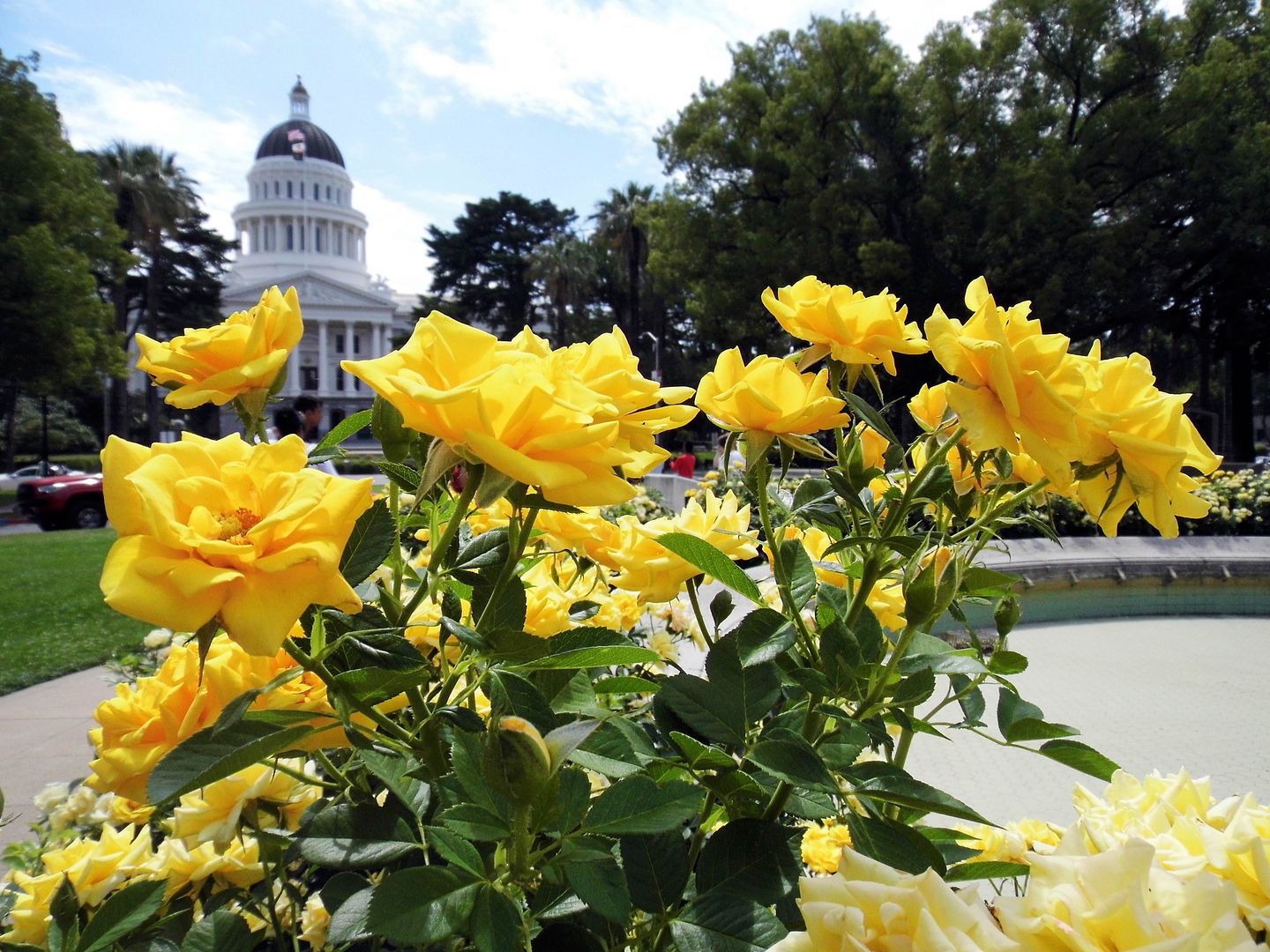
I eventually got there...
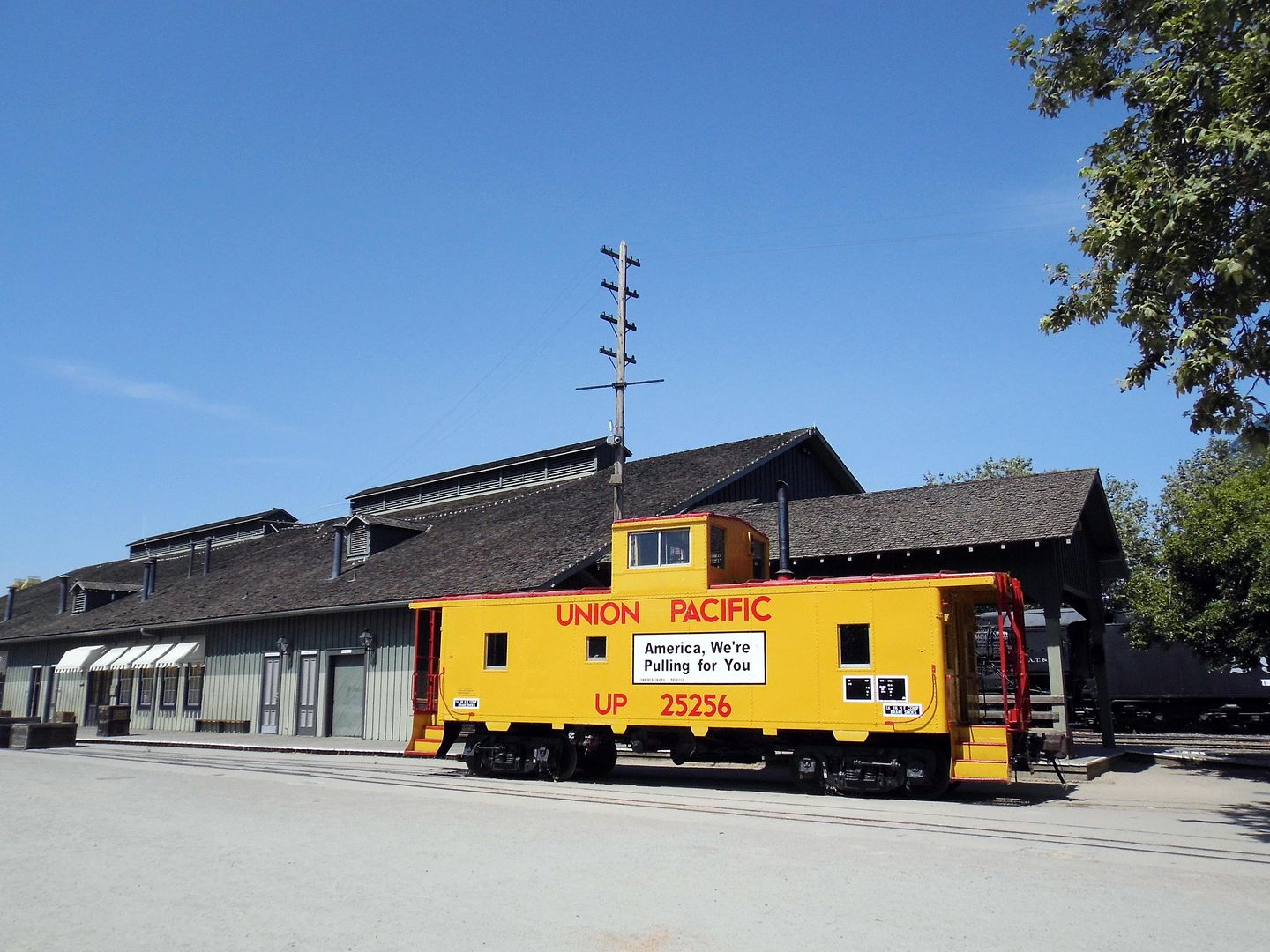
...but the first thing I did was ride the historic train.
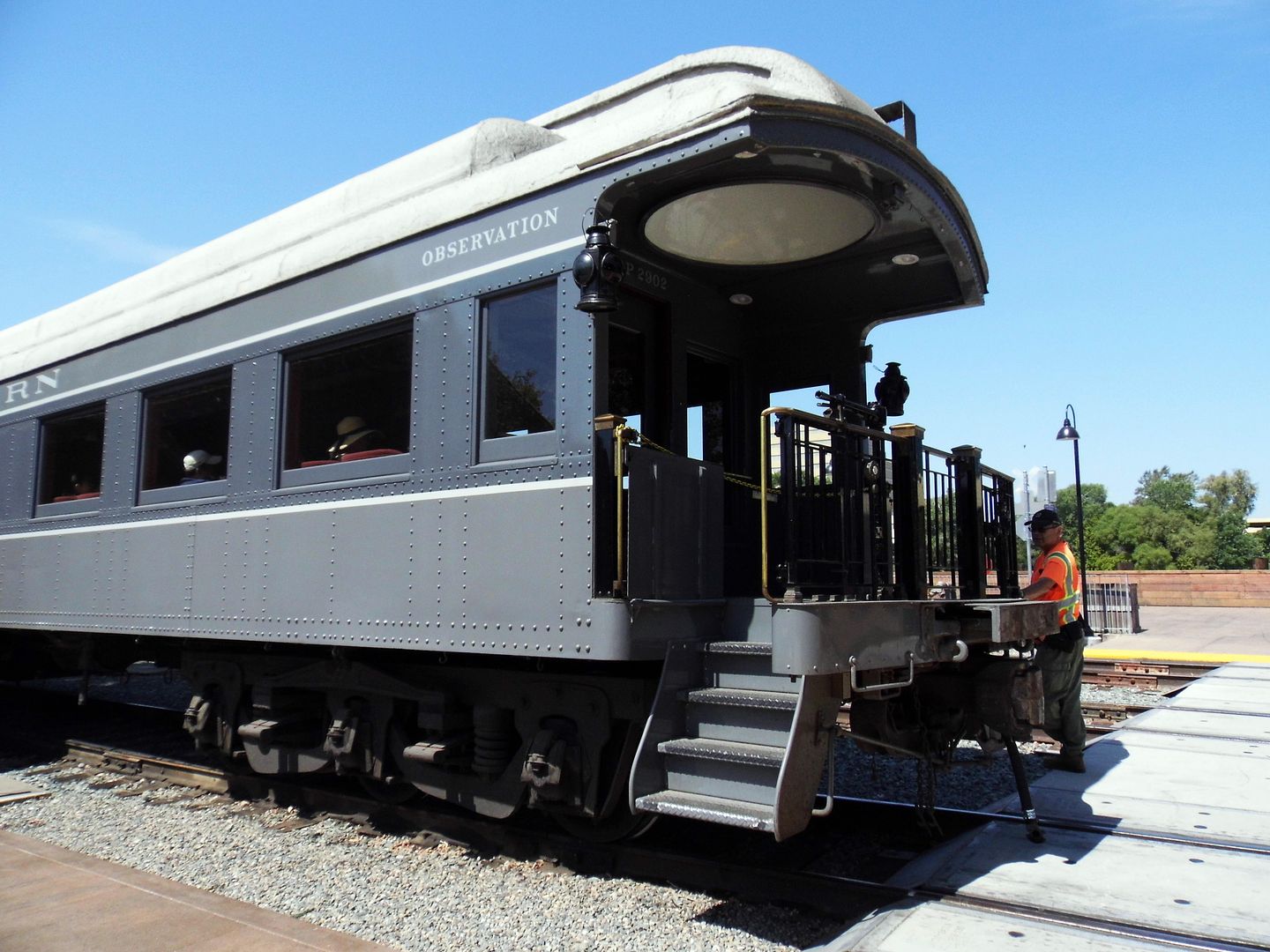
The California State Railroad Museum provides scenic excursions along the the Sacramento Southern Railroad...
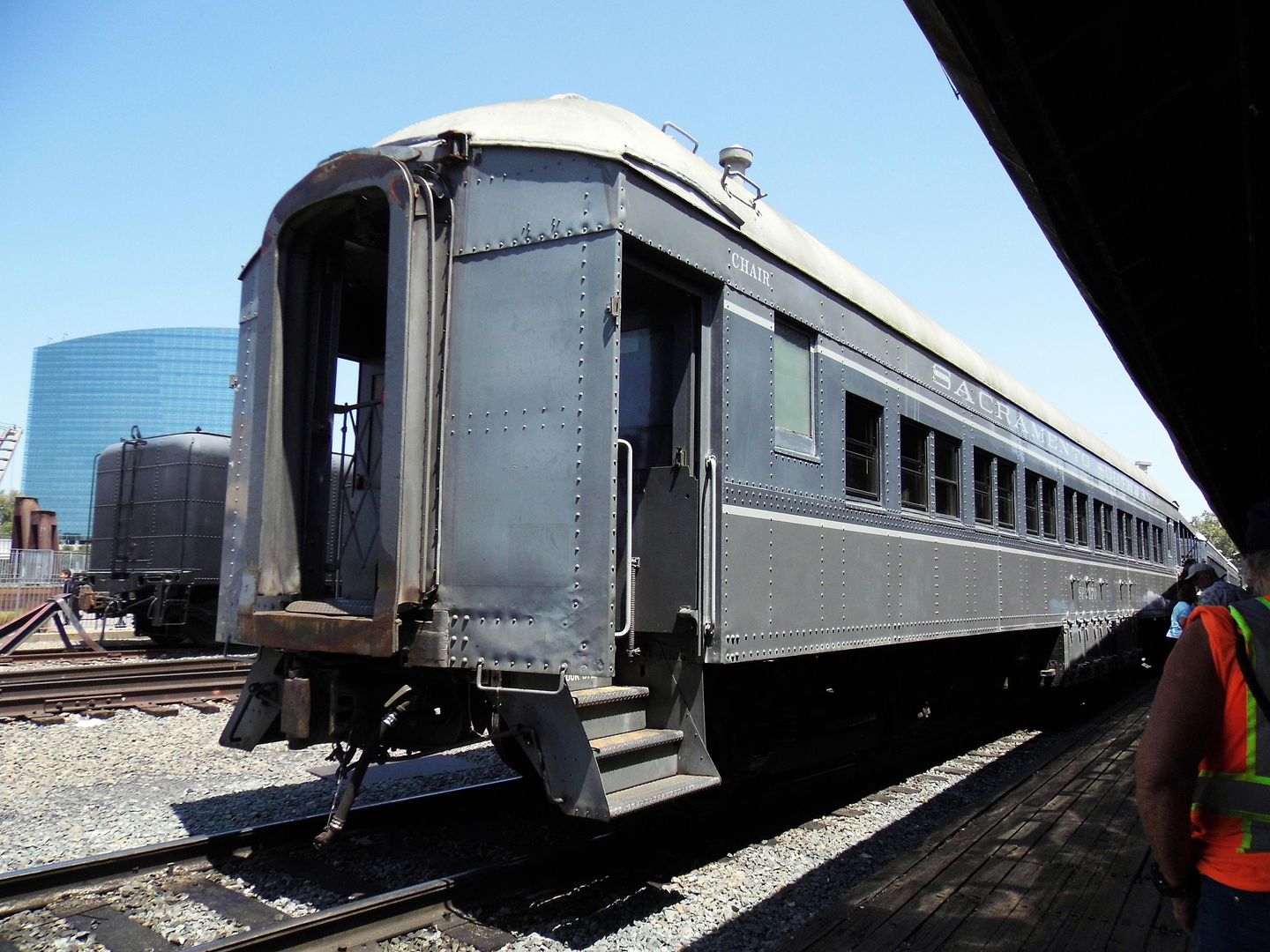
...pulled by a vintage locomotive.
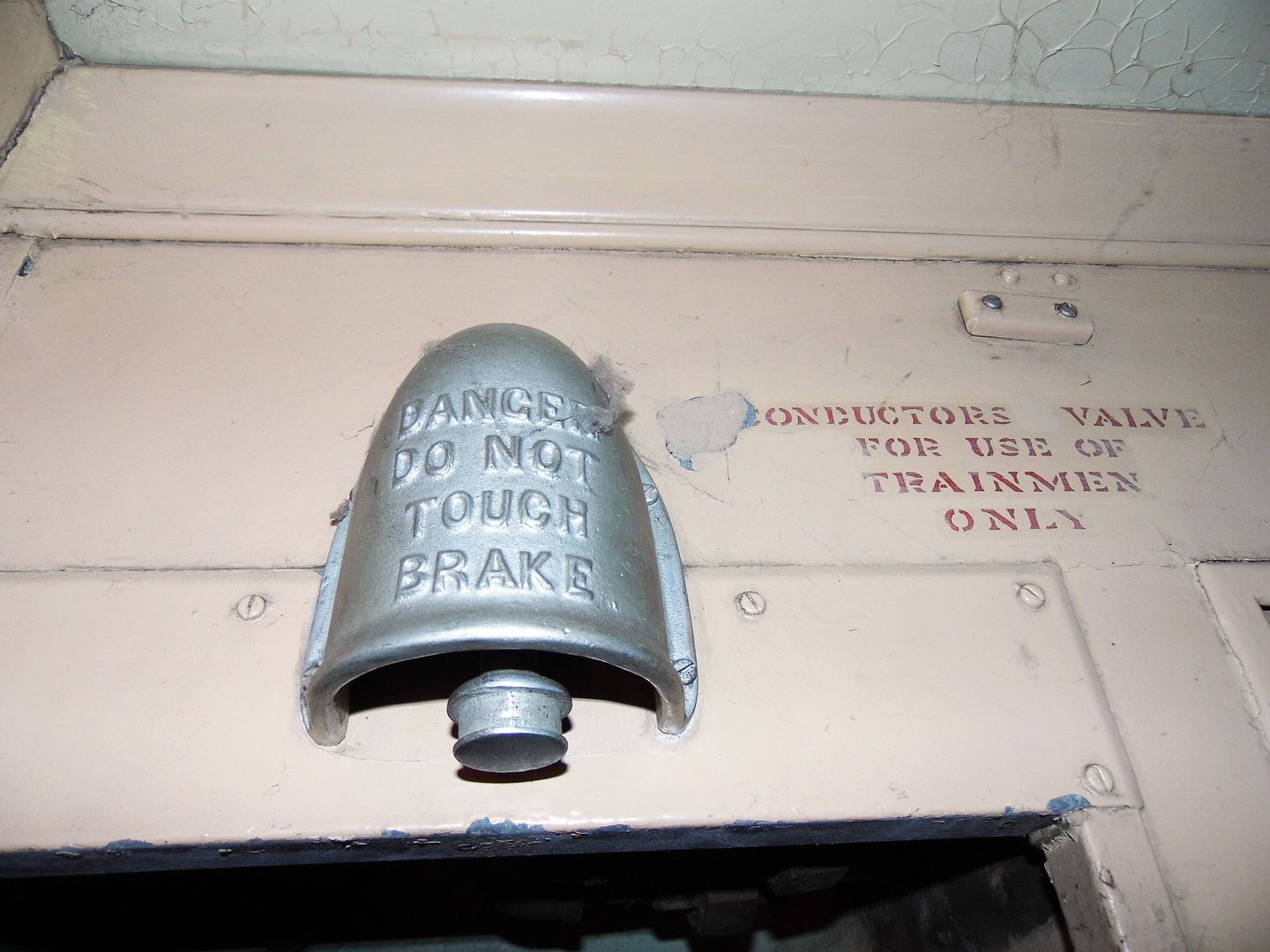
Not knowing I had a choice, I bought a ticket for coach class...
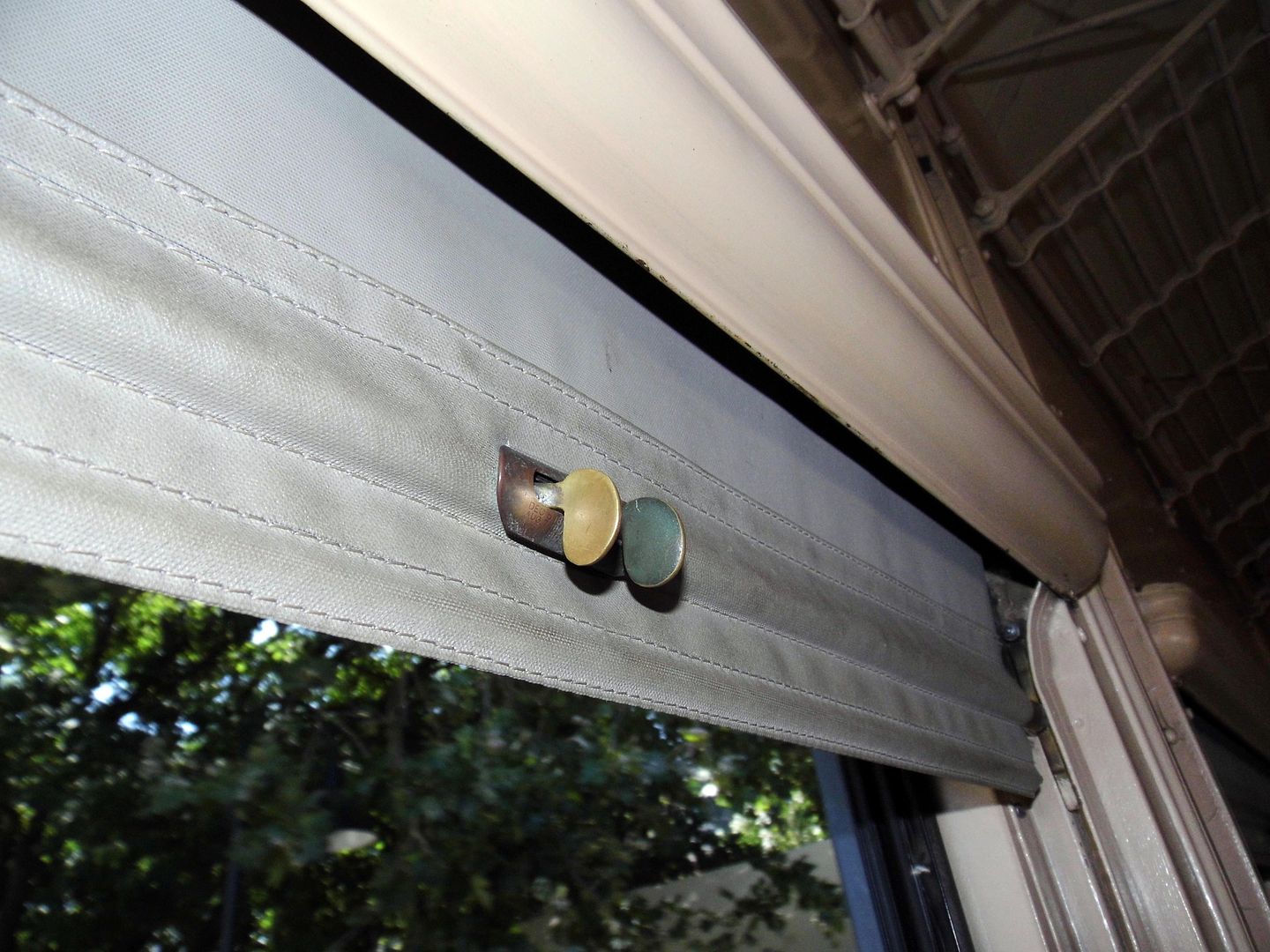
...and sat in one of the closed cars (rather than the first-class observation car)...
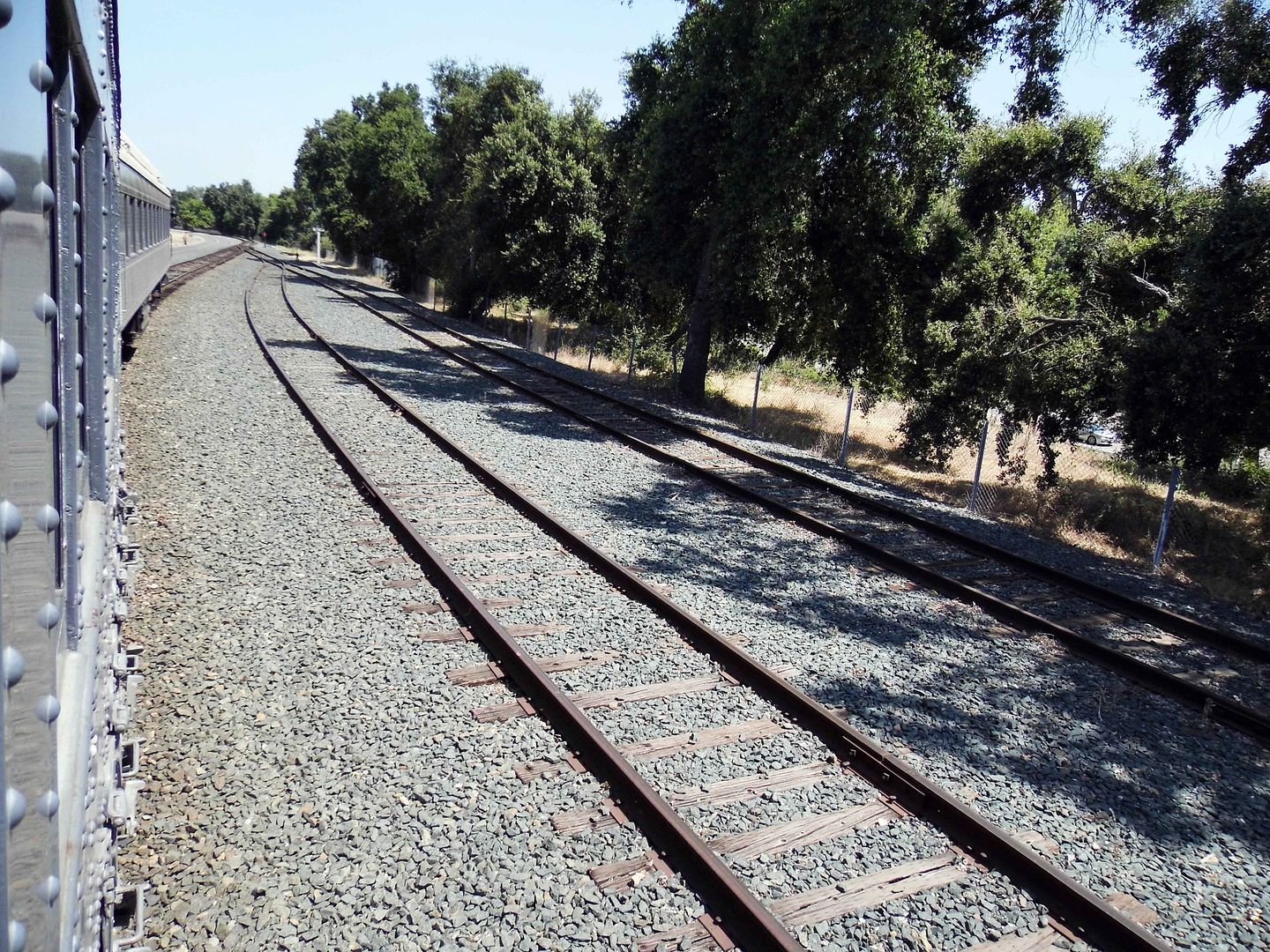
...and watched as we passed through Old Sacramento along the Sacramento River, down two miles of track to the turnaround at Baths (just south of Miller Regional Park).
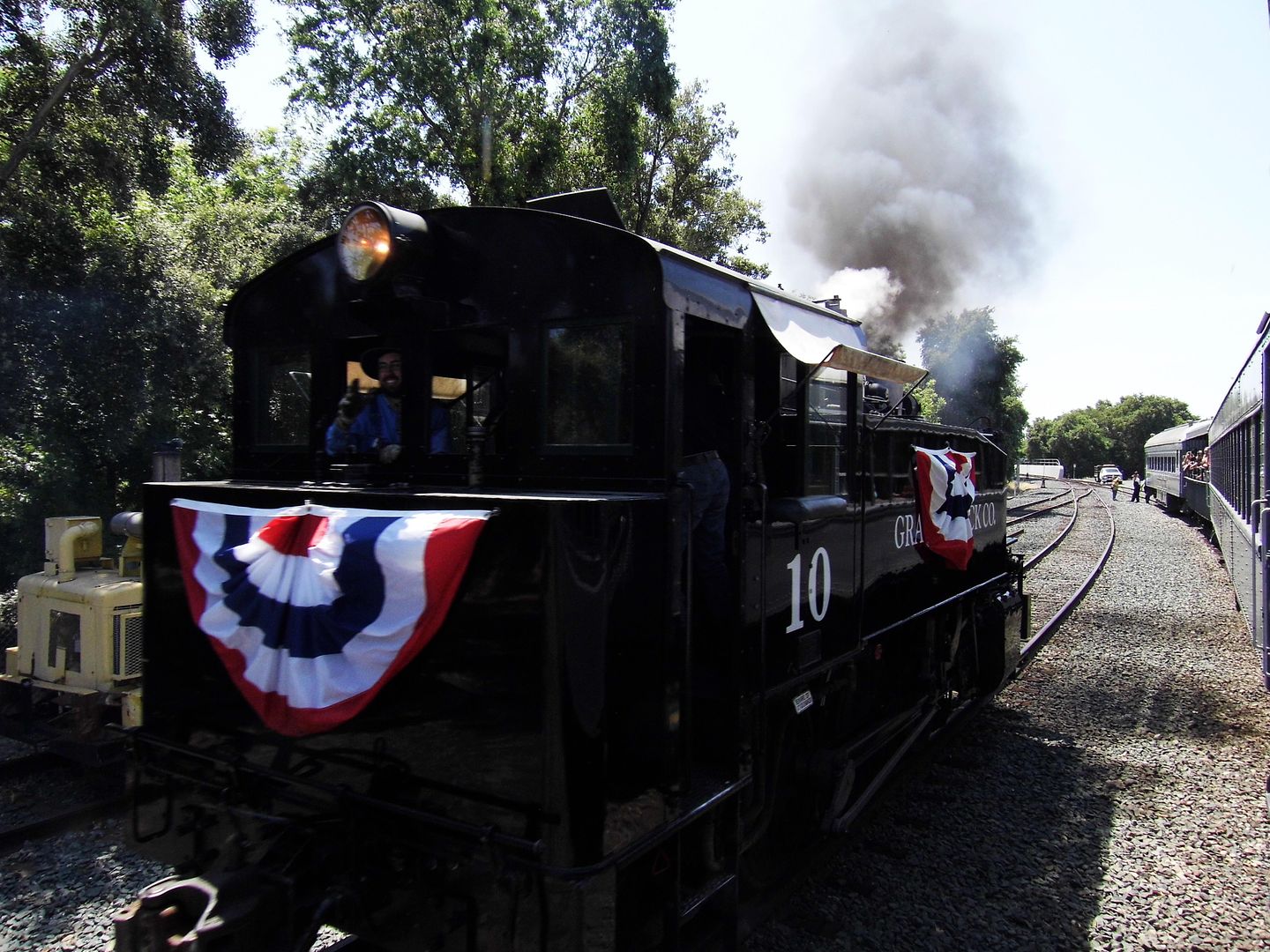
At that point, our steam locomotive (Granite Rock No. 10) detached from the front and scooted past us to reattach to the back...
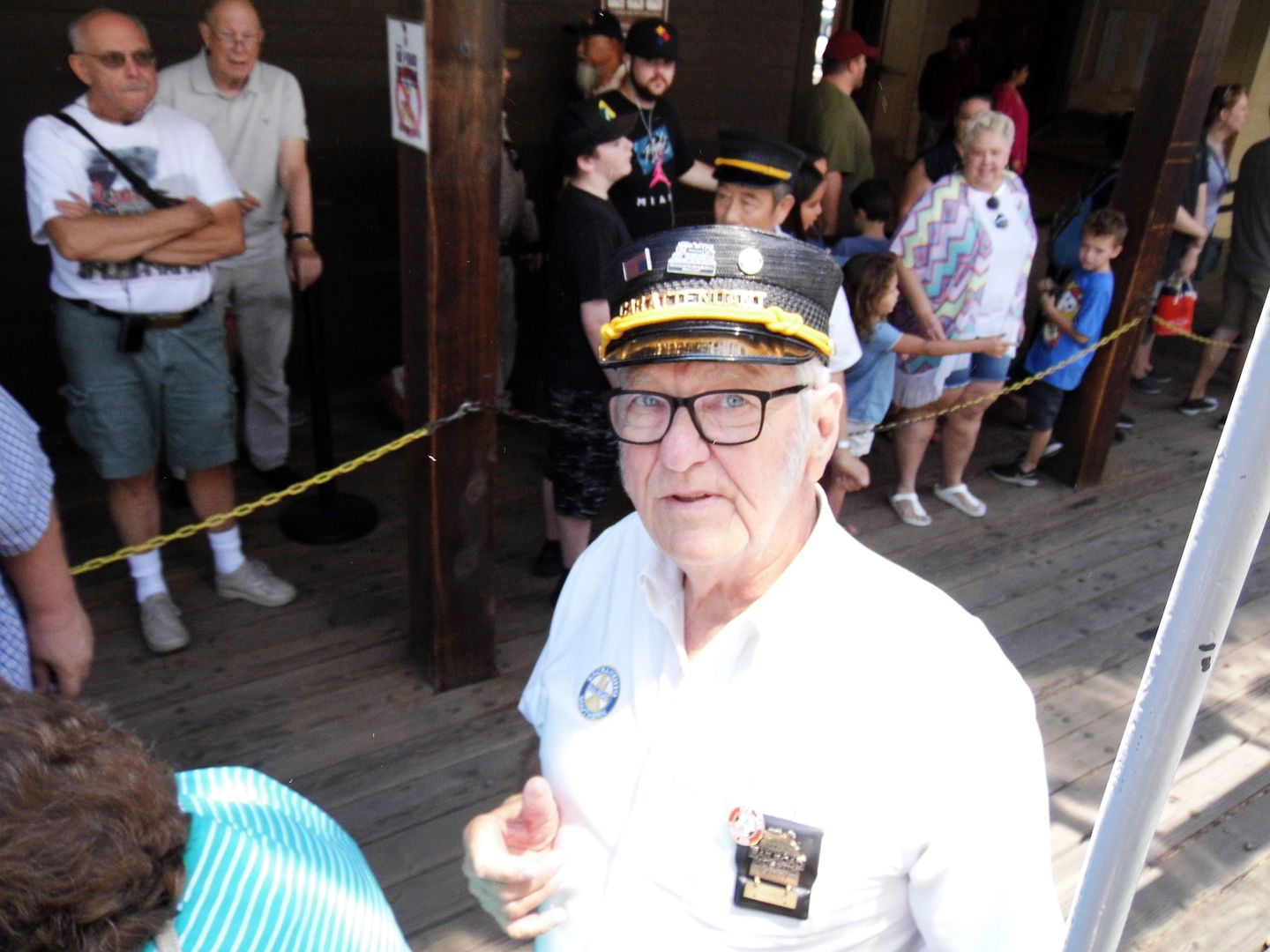
...so we could go back the way we'd come, back to the Central Pacific Railroad Freight Depot.
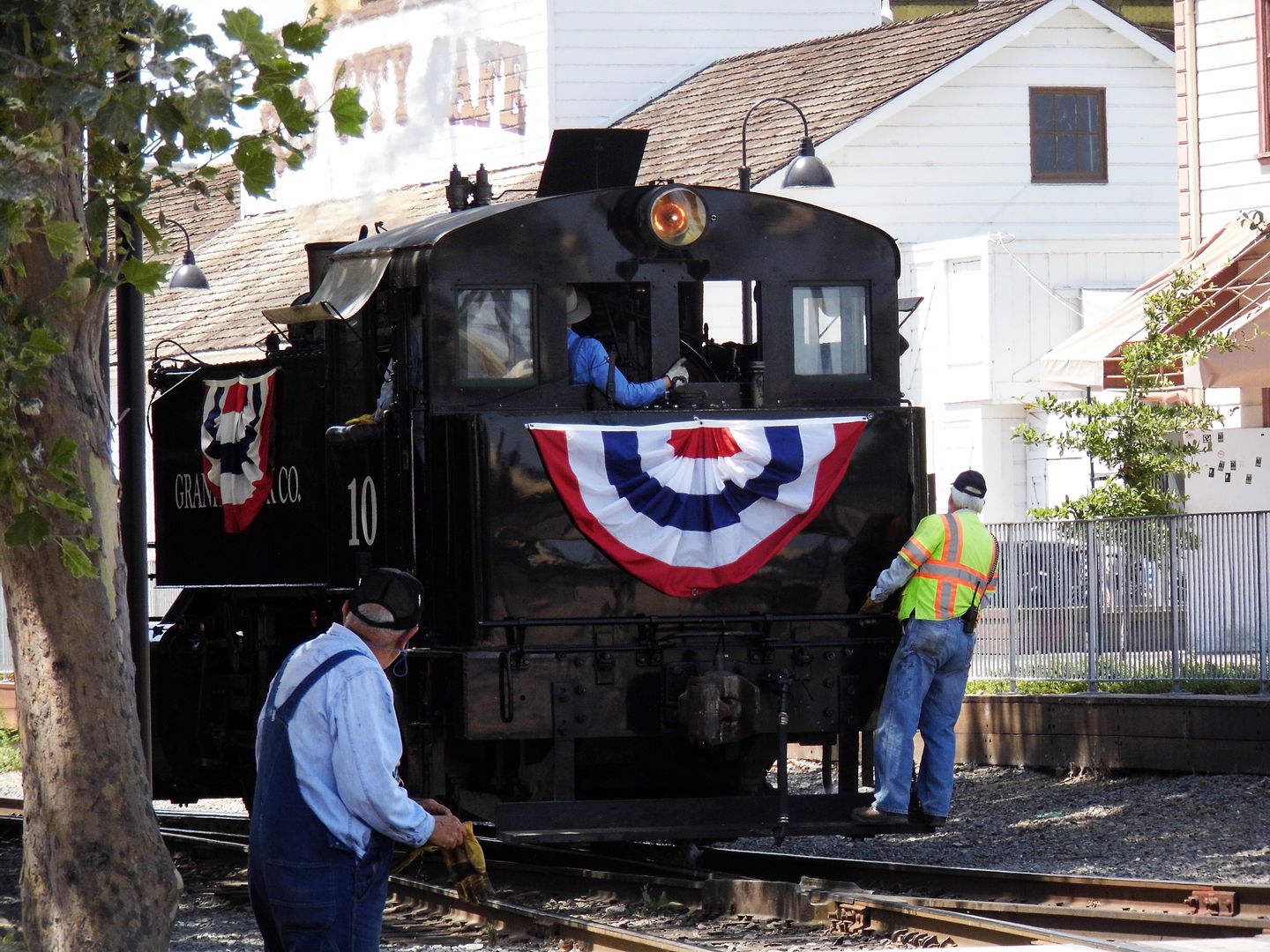
The starting and ending point is just about at the location of the "first spike"—or the groundbreaking—of the Transcontinental Railroad, which celebrates the 150th anniversary of its completion this year.
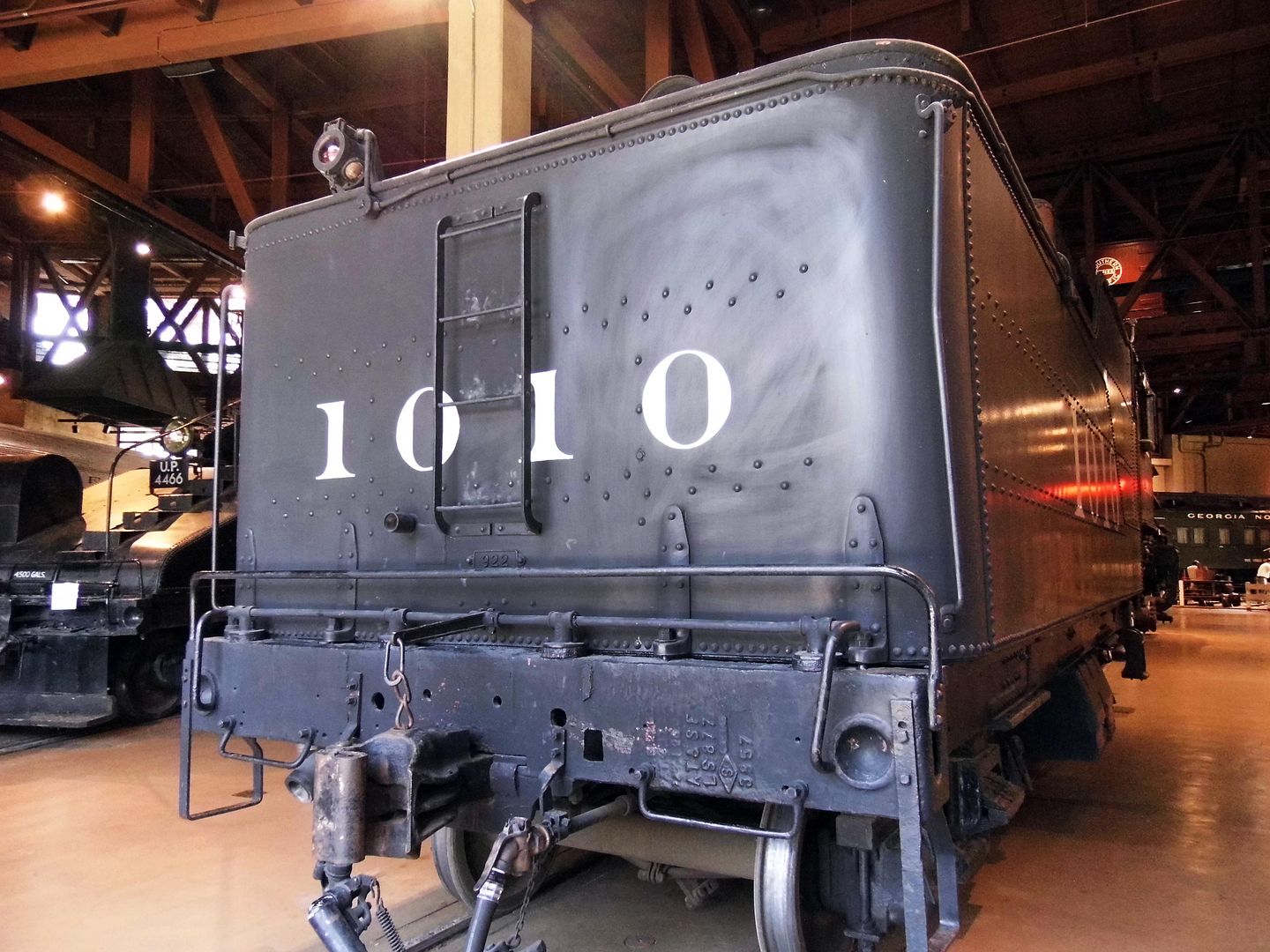
The "last spike" was driven at Promontory, Utah in 1869.
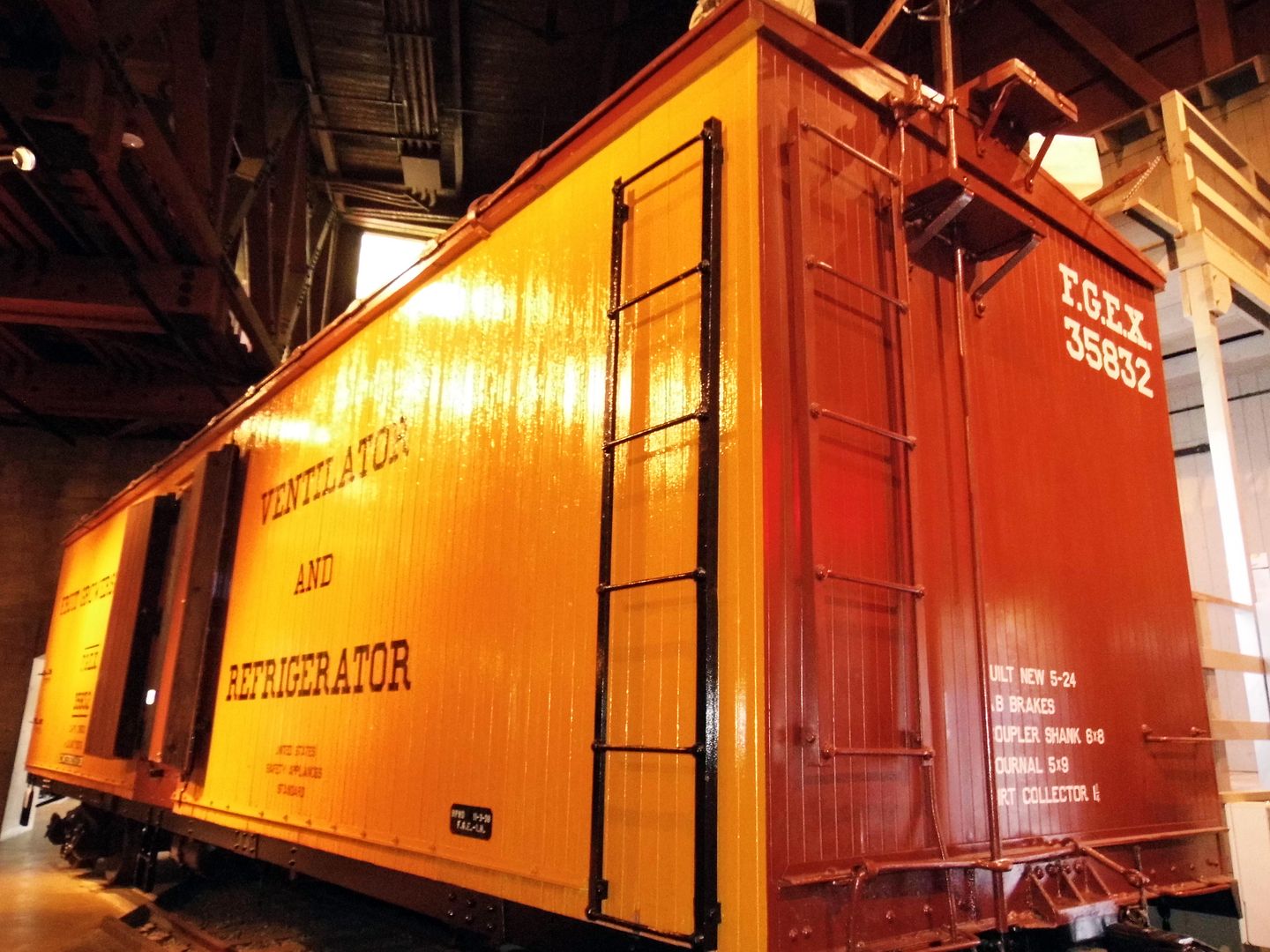
And finally, the U.S. was linked by rail—from West to East.
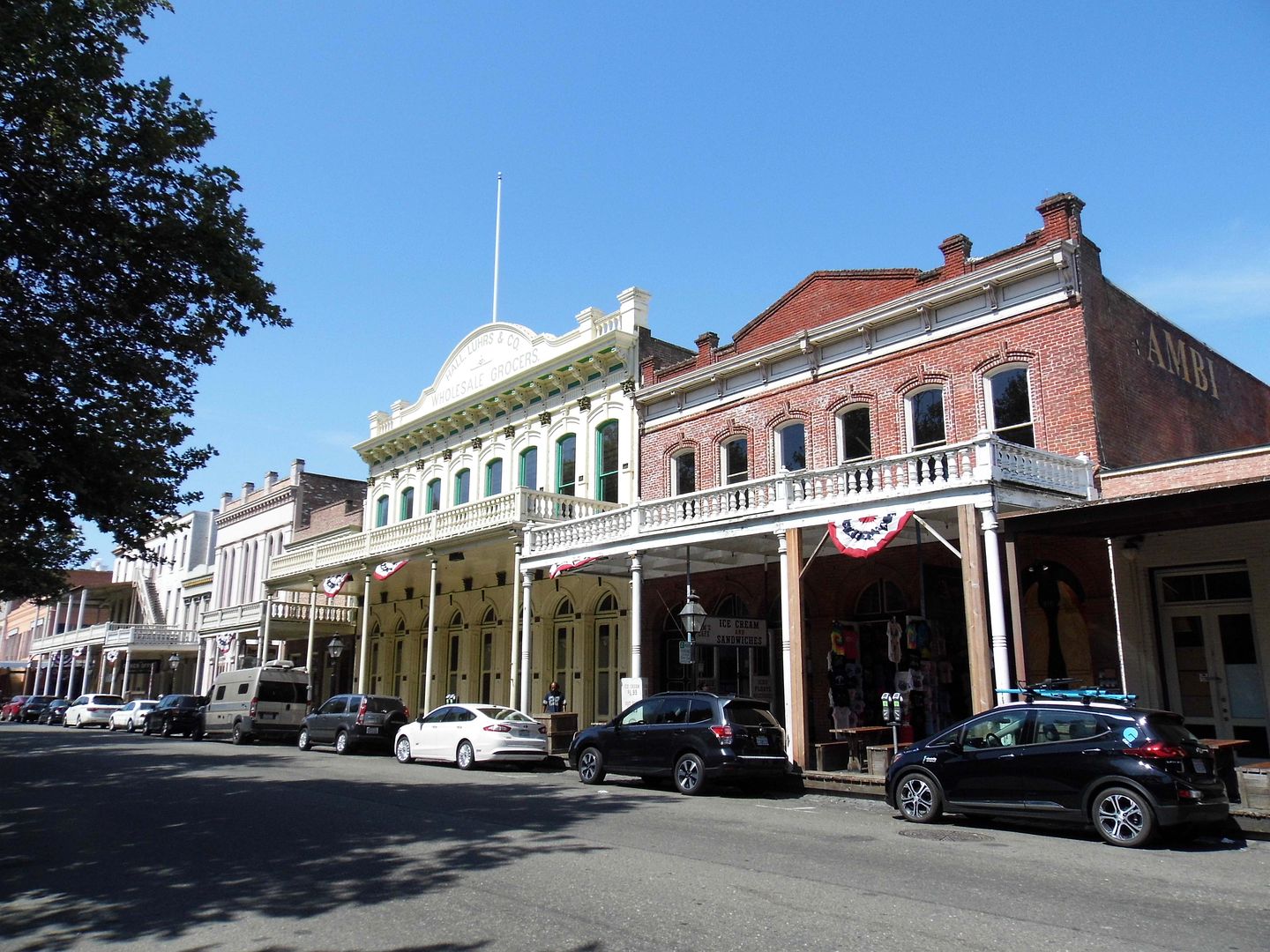
I was surprised to see how much of "Old Sac" had been preserved, looking like an Old West movie set straight out of Hollywood.
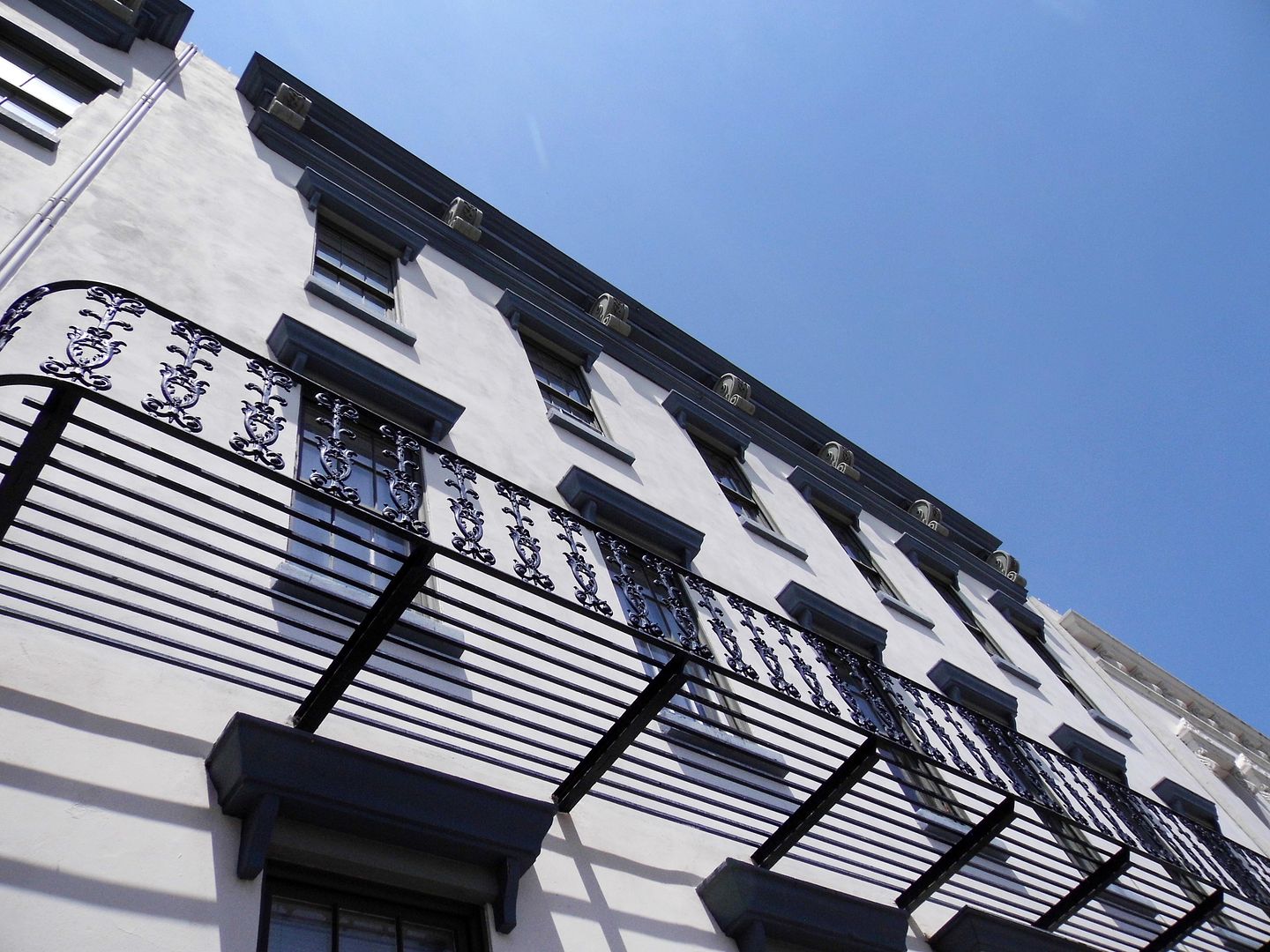
There are the Victorian-style residences (like Clarendon House) with patios and balconies...
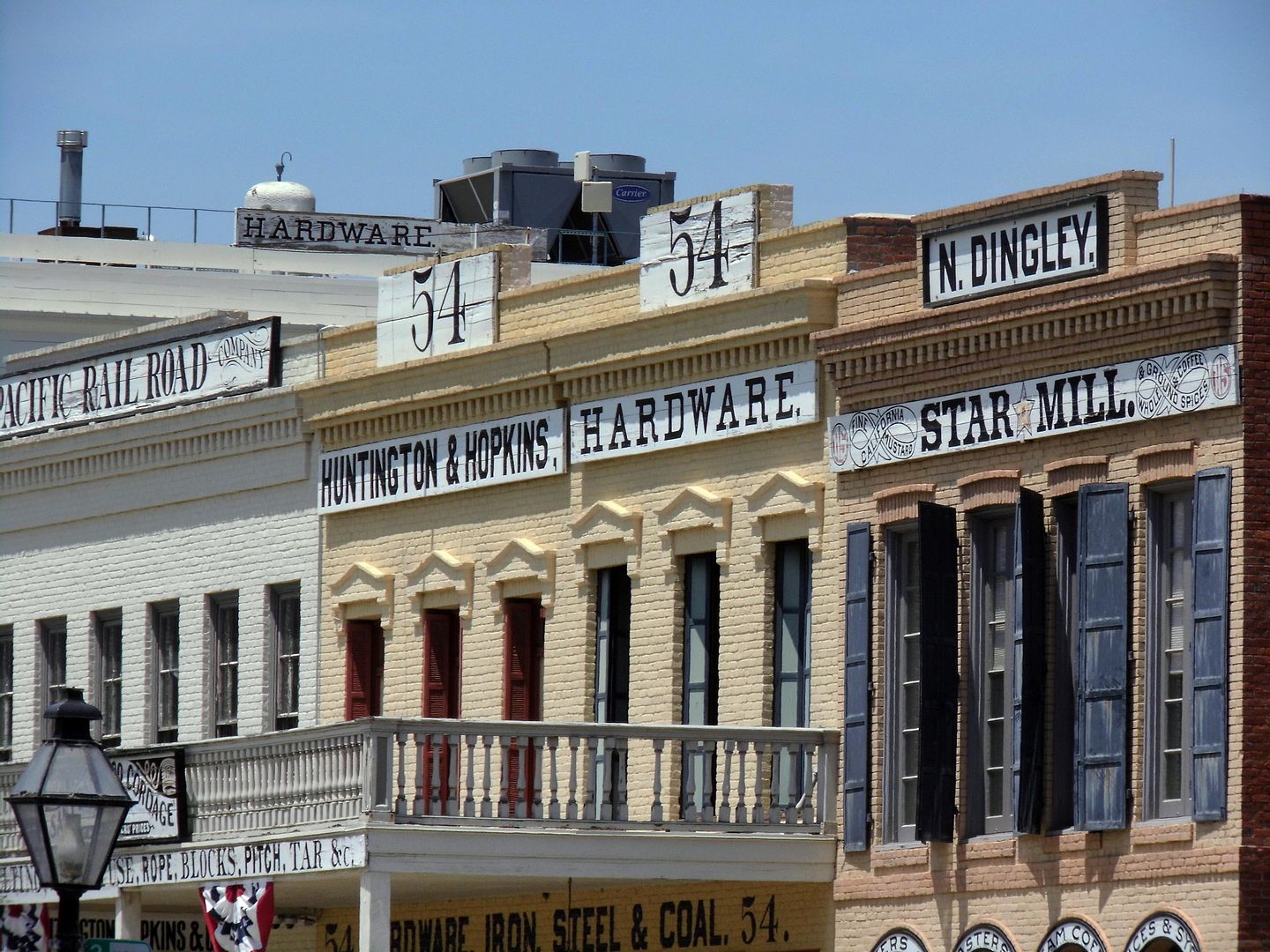
...as well as dusty old storefronts and saloons...
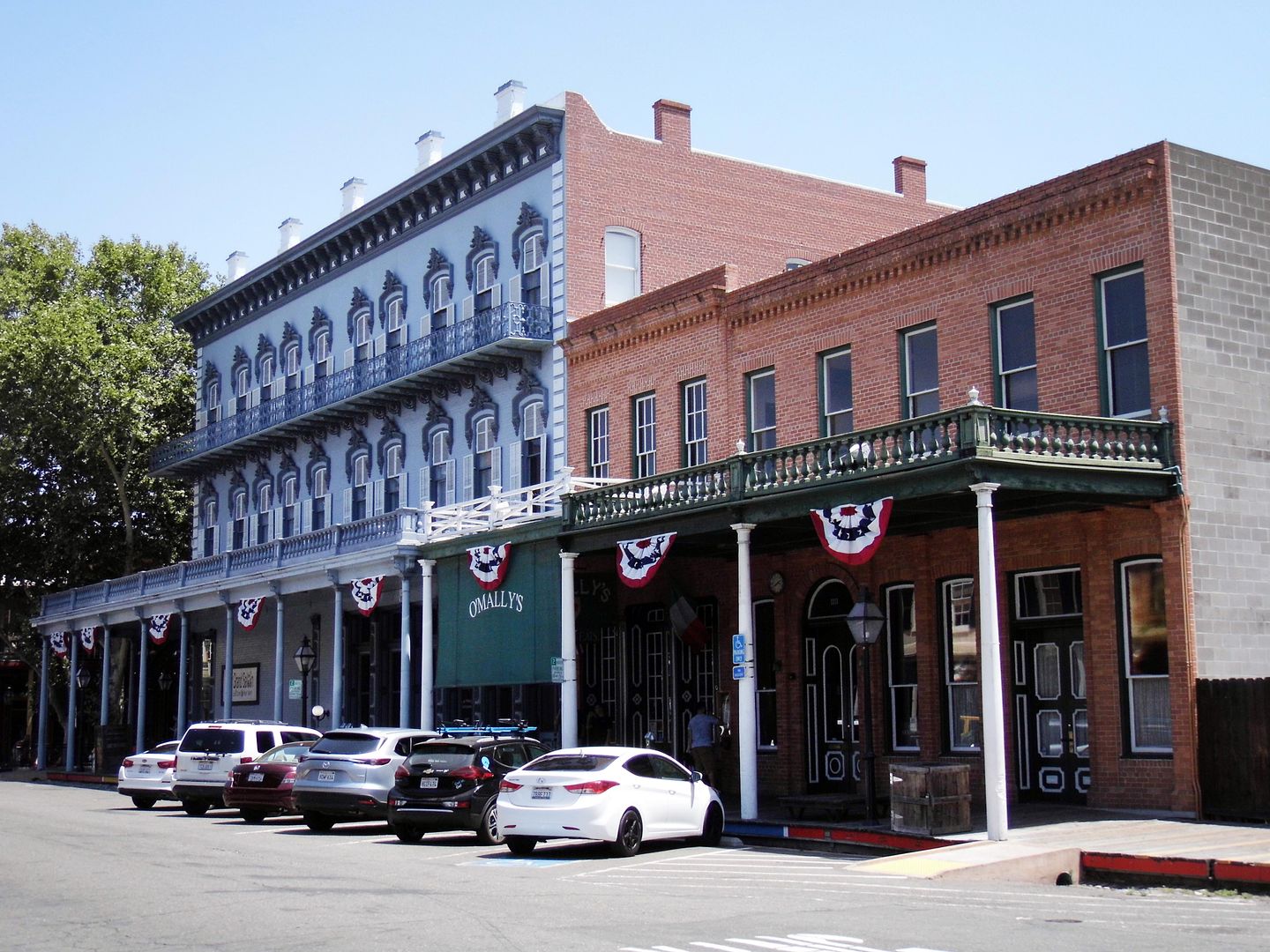
...which harken back to the days when Mark Twain dubbed Sacramento the "City of Saloons."
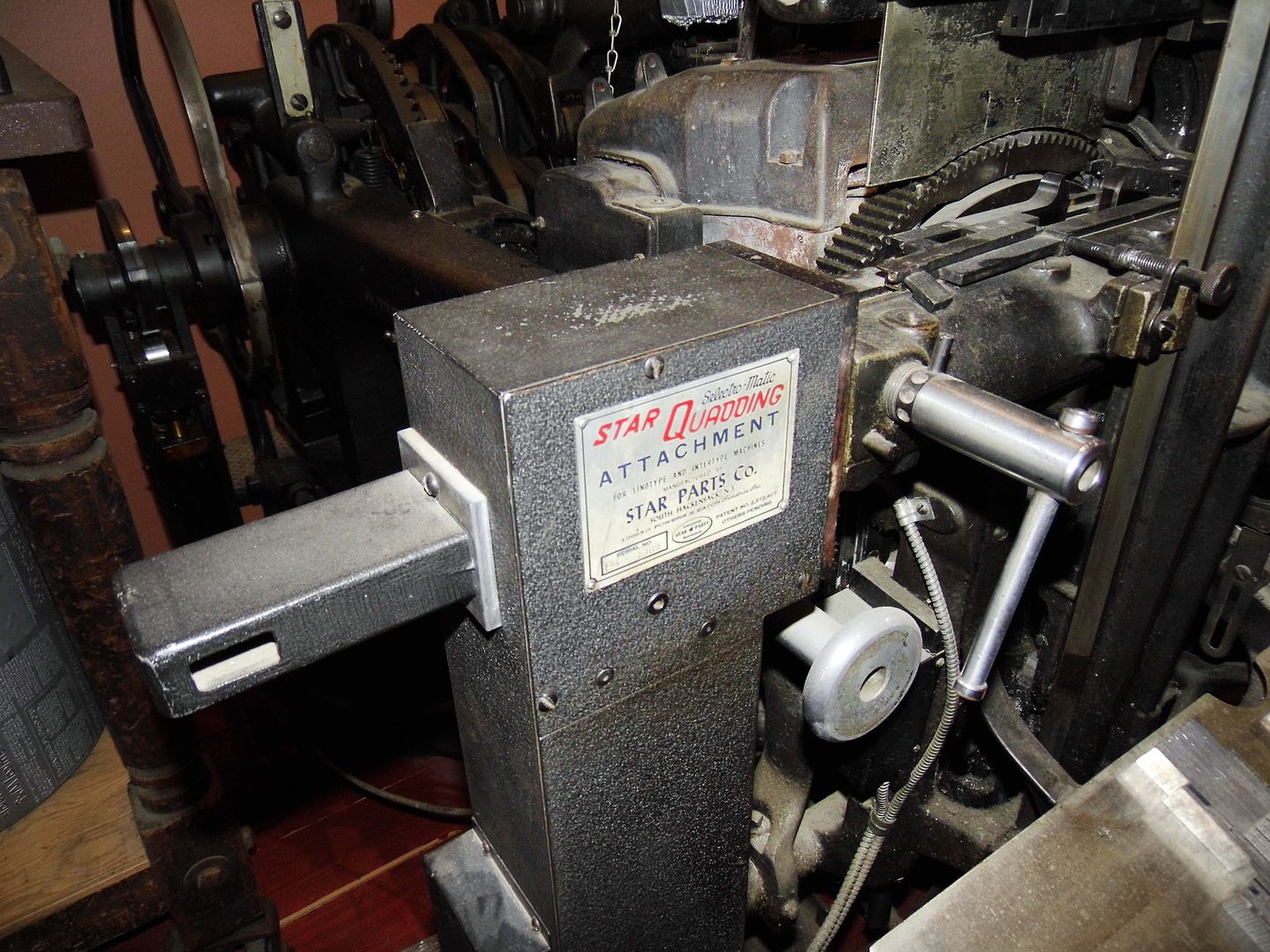
Twain was renowned for his contributions to The Sacramento Union daily newspaper in the 19th century. Ultimately, the Union was put out of business by The Sacramento Bee, whose early equipment is on display at the Sacramento History Museum.

For me, the stronger draw to the museum was its guided walking tour, which took our group outside, past a replica of Sacramento's first performing arts theater, the Eagle Theatre (made from salvaged materials from ships left abandoned on the river)...
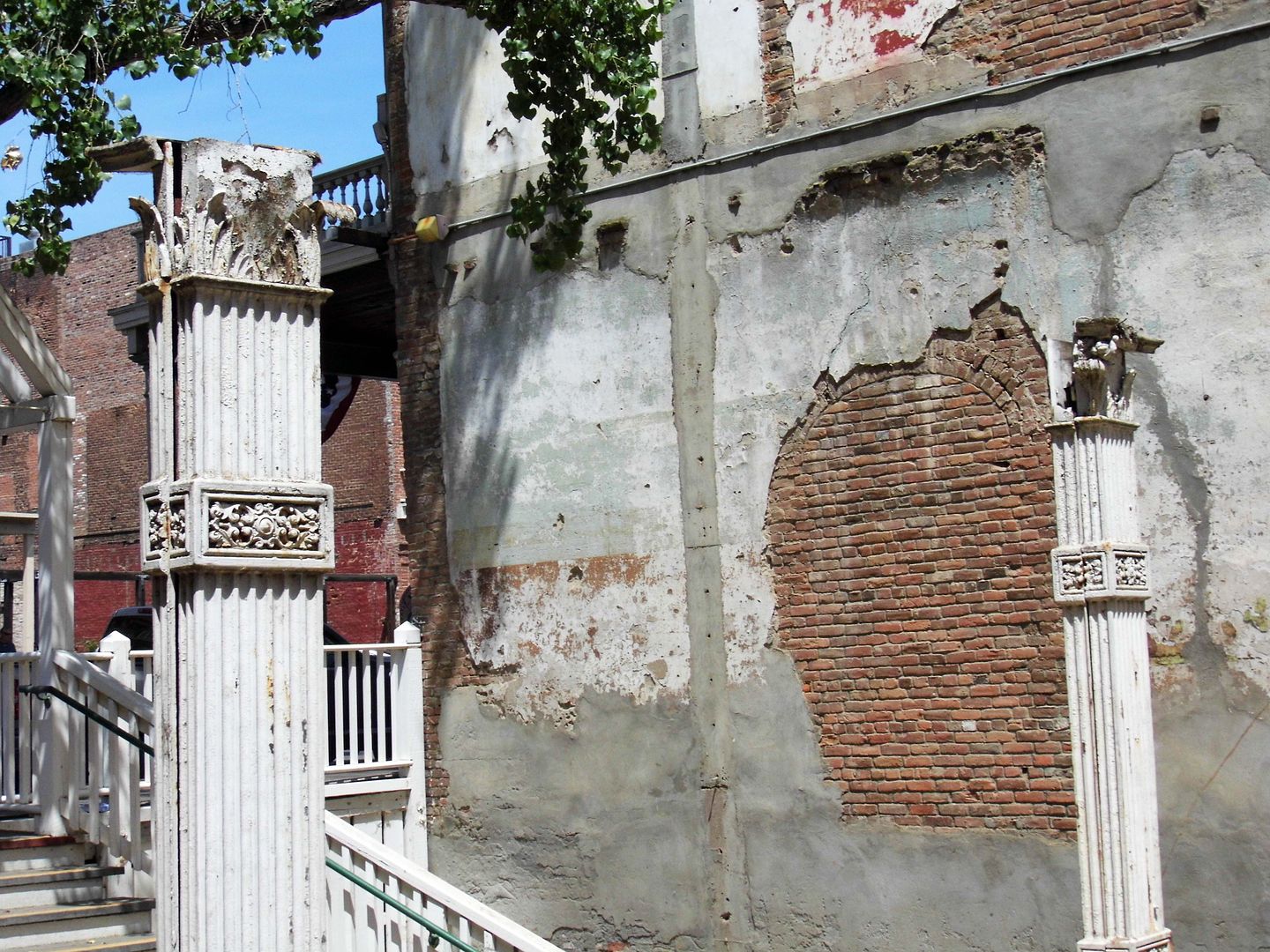
...to Pioneer Park, a sunken public space (where a butcher shop once stood, facing J Street) that gives clues to the "hidden city" below Sacramento.

From there, we headed down Firehouse Alley, past fire escapes foolishly constructed of wood...
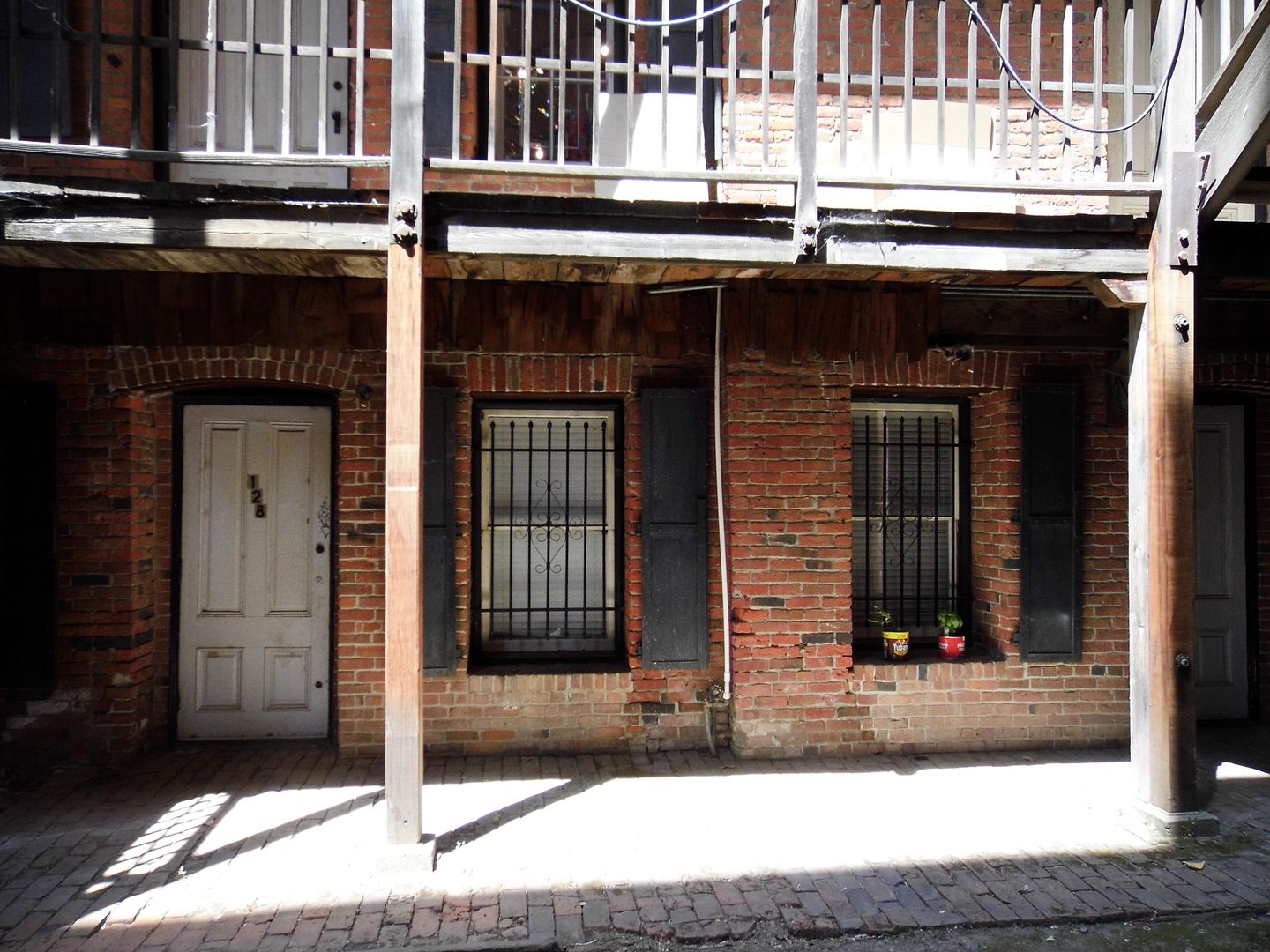
...and down into the subterranean level of the B.F. Hastings building (now the Sacramento Visitors Center), which once served as Sacramento's original street level.
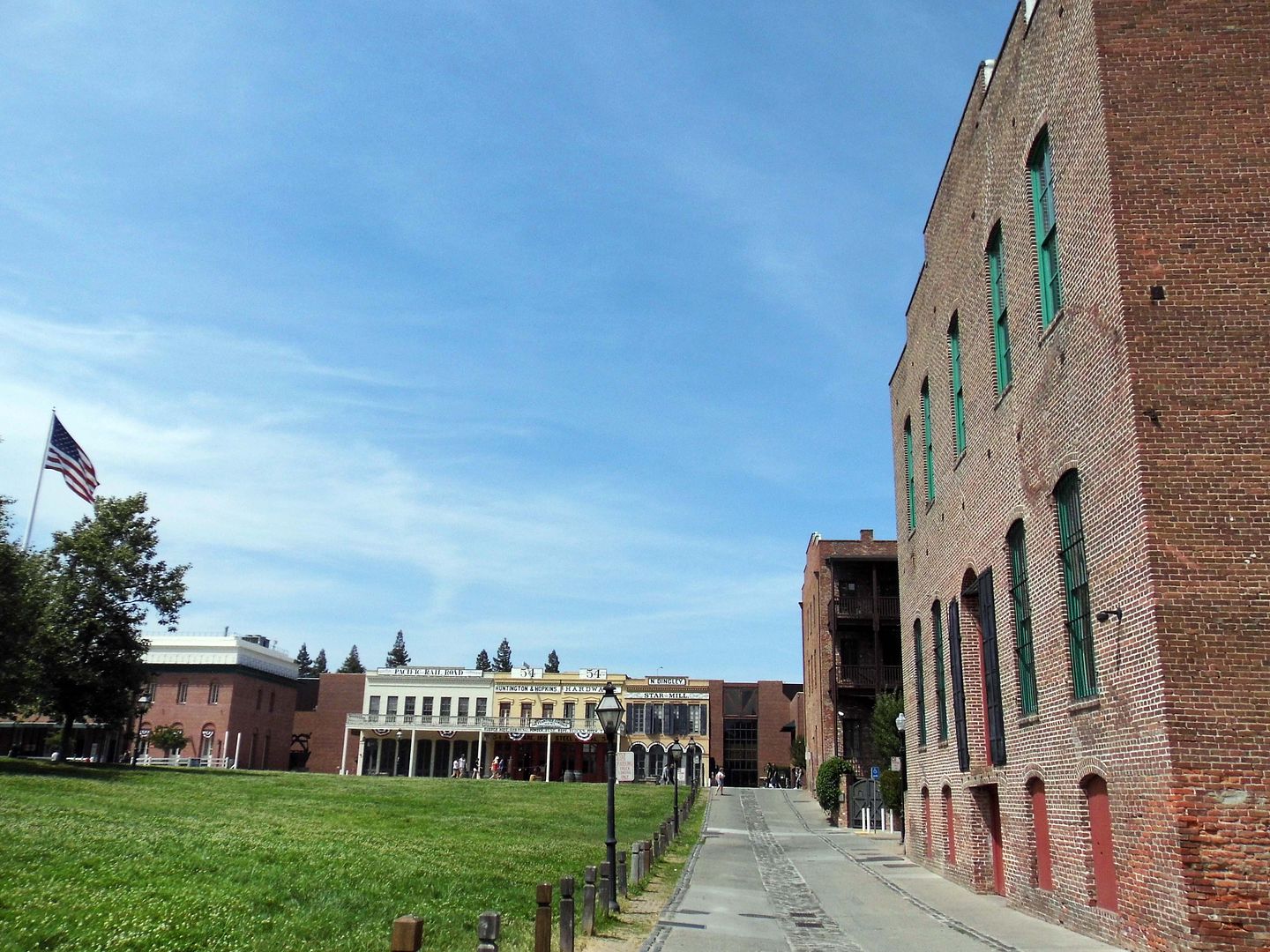
Like Seattle, Sacramento suffered such severe flooding (here, from the Sacramento and American Rivers in 1861 and 1862) that city officials voted to "jack up" its waterfront district buildings and raise the level of the streets and sidewalks.

That left sunken alleyways and abandoned basements galore—some of which have been excavated and preserved as part of the legacy of this "City of Floods."
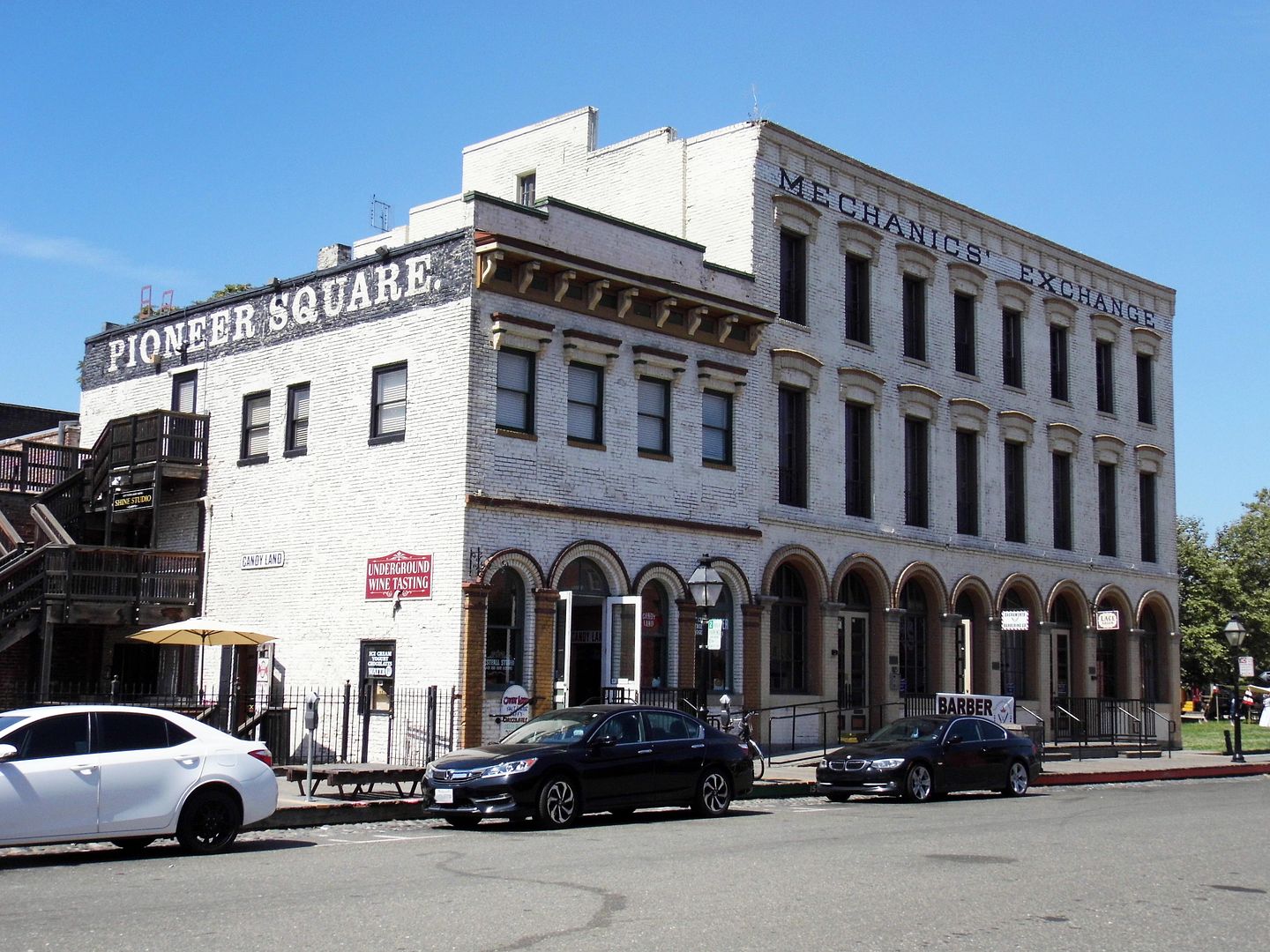
Fortunately, Sacramento no longer floods, thanks to a series of reinforced levees and the historic realignment of where the Sacramento and American Rivers converge. At the time, there was so much disagreement as to which of the three fixes would be best that they ended up doing all of them.
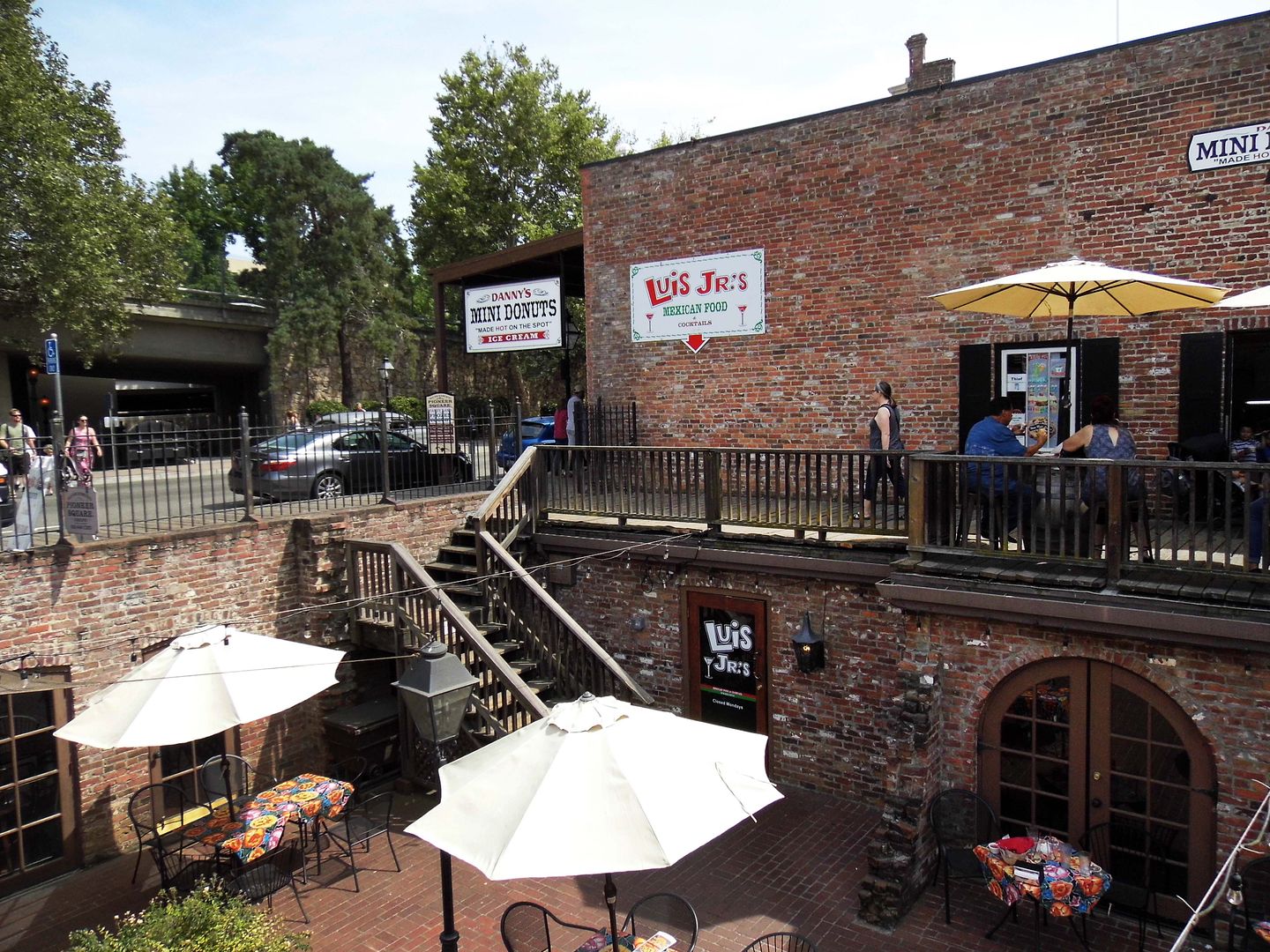
Some buildings that succumbed to floods, however, were simply razed and never rebuilt—exposing underground spaces, like the courtyard at Pioneer Square, below Danny's Mini Donuts and at the entrance to the Underground Tasting Room (home to Twisted Twig and Rendez-vous wineries). An assay office serving Gold Rush miners probably stood here until the 1860s.

There's no less history, of course, when you head away from the River and explore the area east of the Capitol Building—where Sacramento's European history began with the arrival of Captain John A. Sutter in 1839.
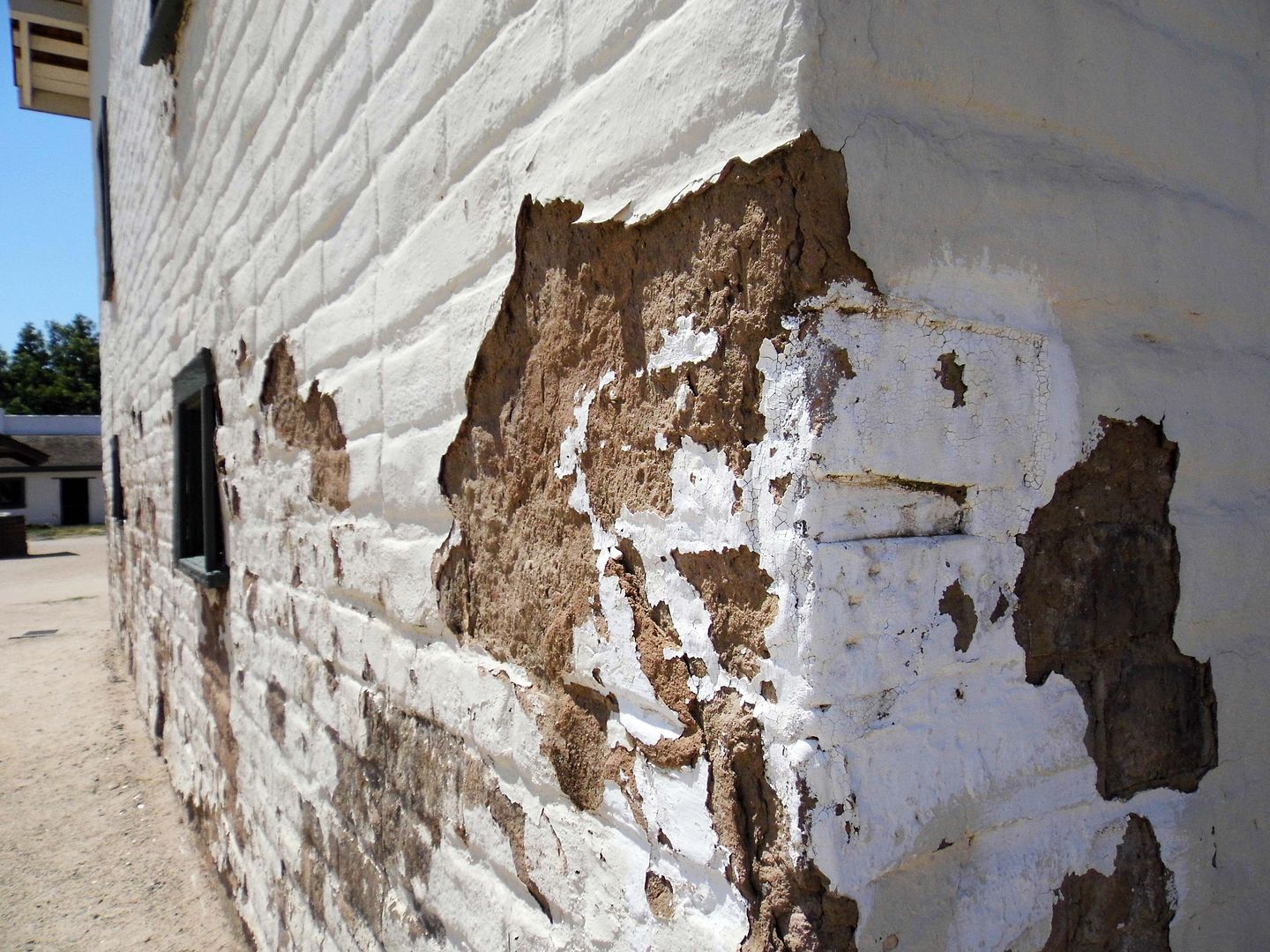
The Swiss pioneer (born Johann August Suter) and Native American slavemaster established a fort and called the settlement "New Helvetia" (or "New Switzerland")—though he's more famous for his mill in Coloma, where the "Gold Rush" reportedly began in 1848.
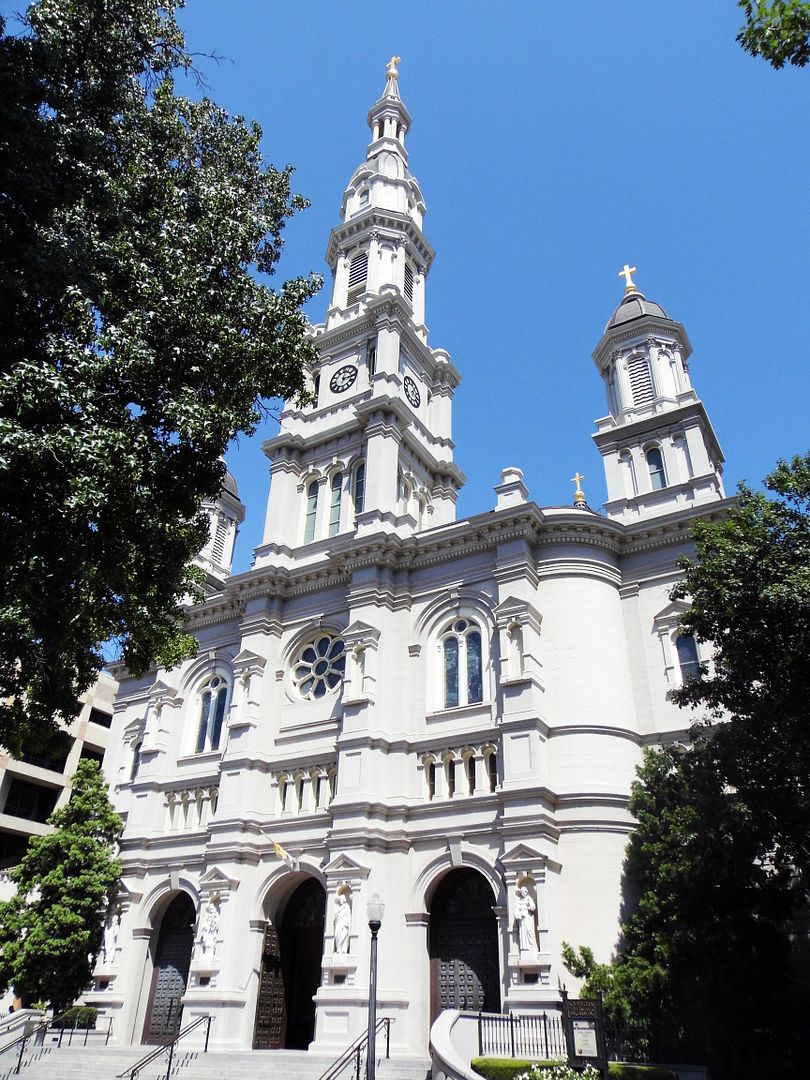
The Cathedral of the Blessed Sacrament (completed 1889)—one of the largest cathedrals west of the Mississippi—has been considered one of the capital city's three most historic buildings, next to the Capitol Building and City Hall (which the cathedral is situated directly between).
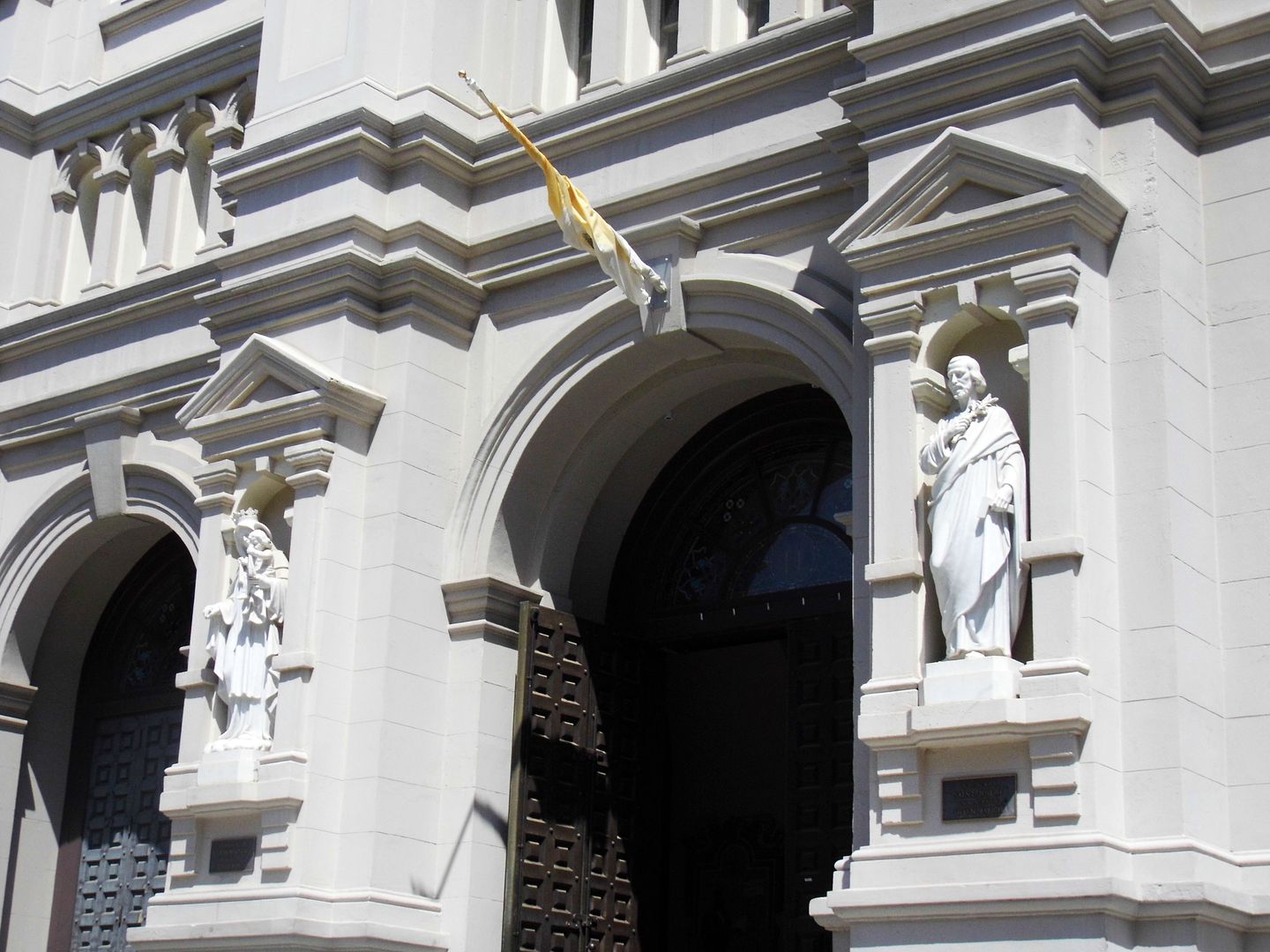
Funerals for California state governors, including Pat Brown, have been held here as well—making it a civic as well as religious landmark.

Around the corner, towering above a Claim Jumper restaurant at street level, is the Sacramento Benevolent and Protective Order of Elks (B.P.O.E.) tower—a 14-story brick temple erected in 1926.
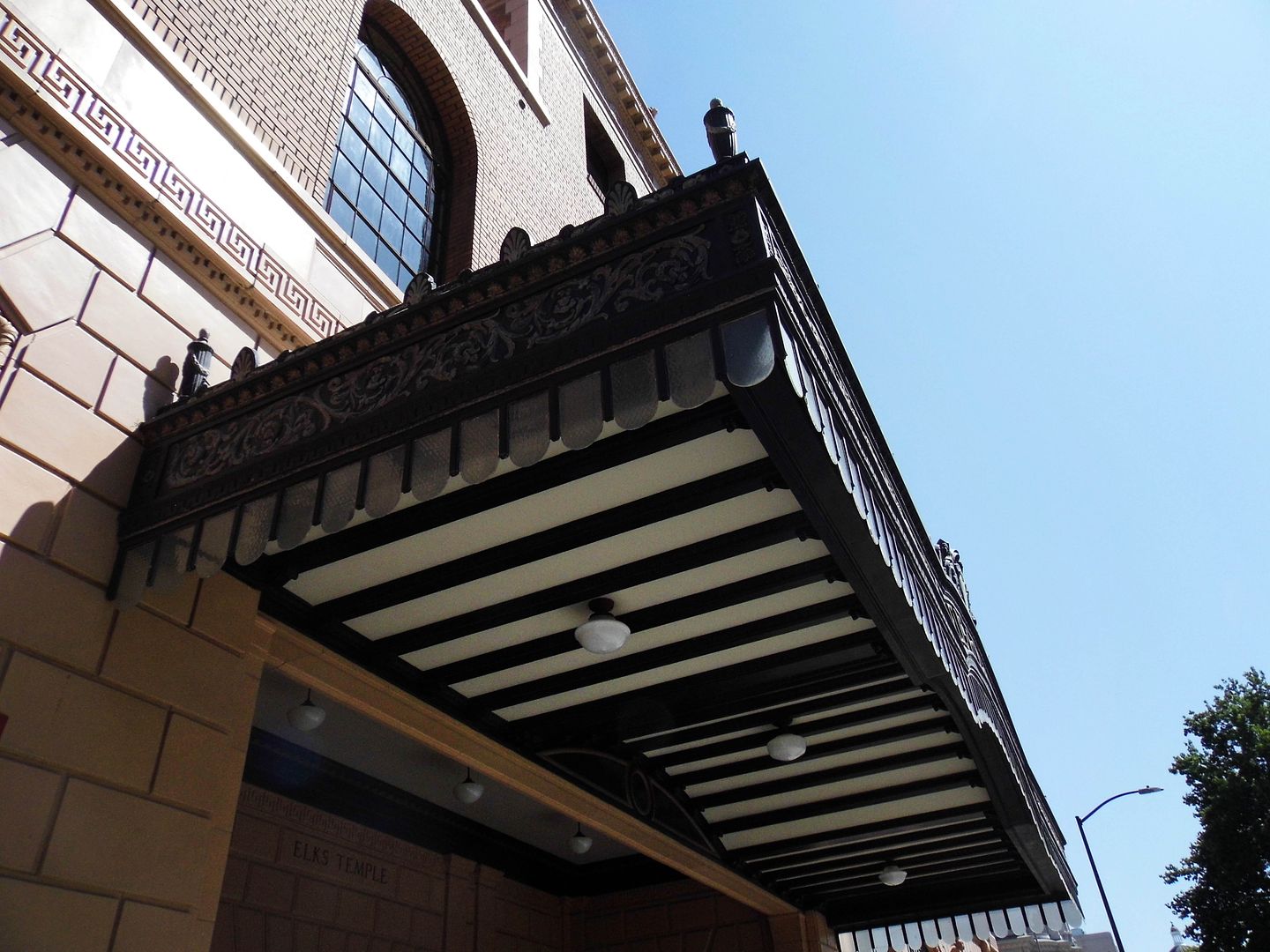
An example of Italian Renaissance architecture from the early 20th century, the Elks Temple has been rebranded as the Elks Tower Casino and Event Center and no longer serves as the Elks Lodge #6.
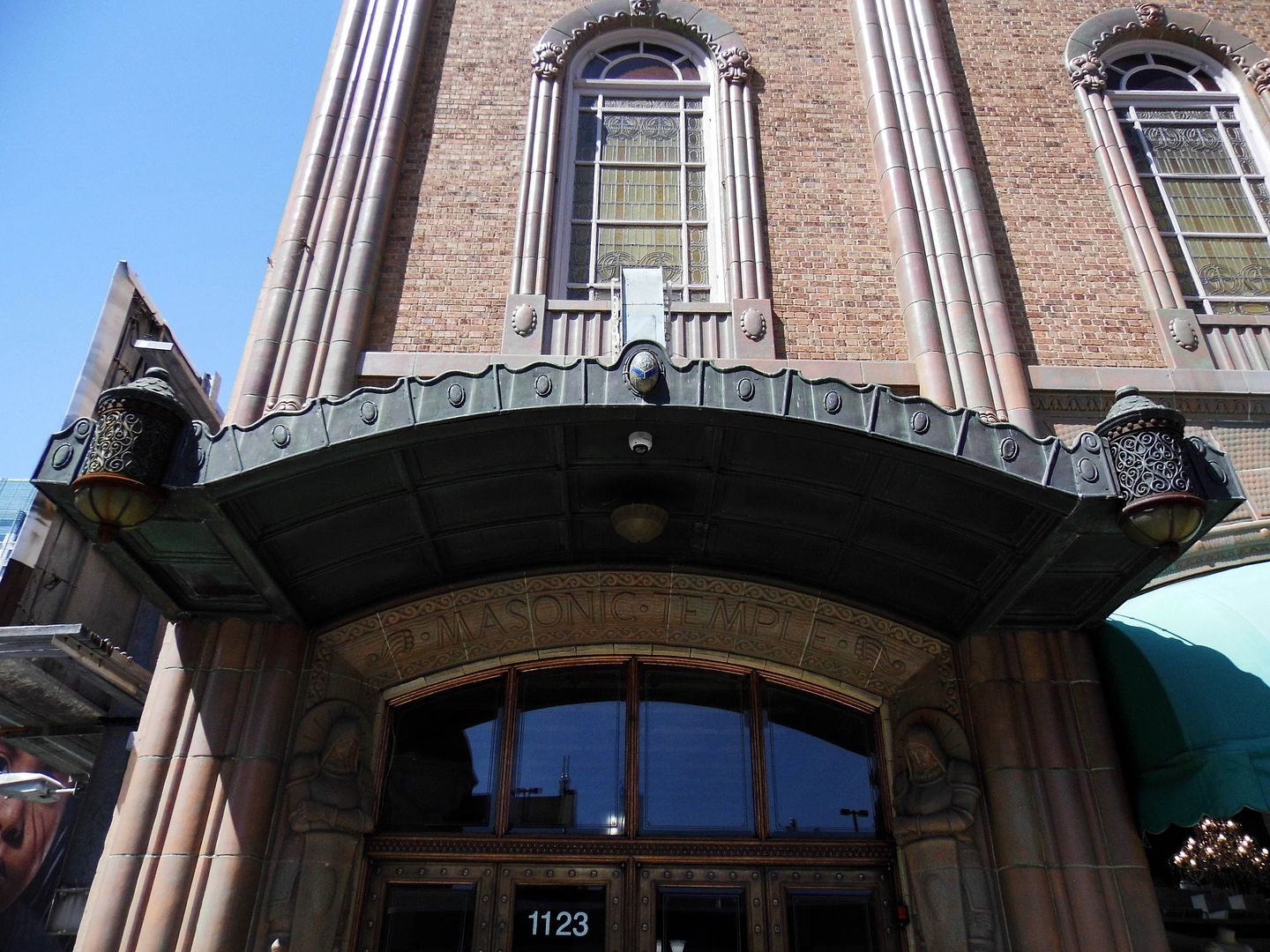
But Freemasons can find their lodge next door, separated from the Elks Tower by only a parking lot.
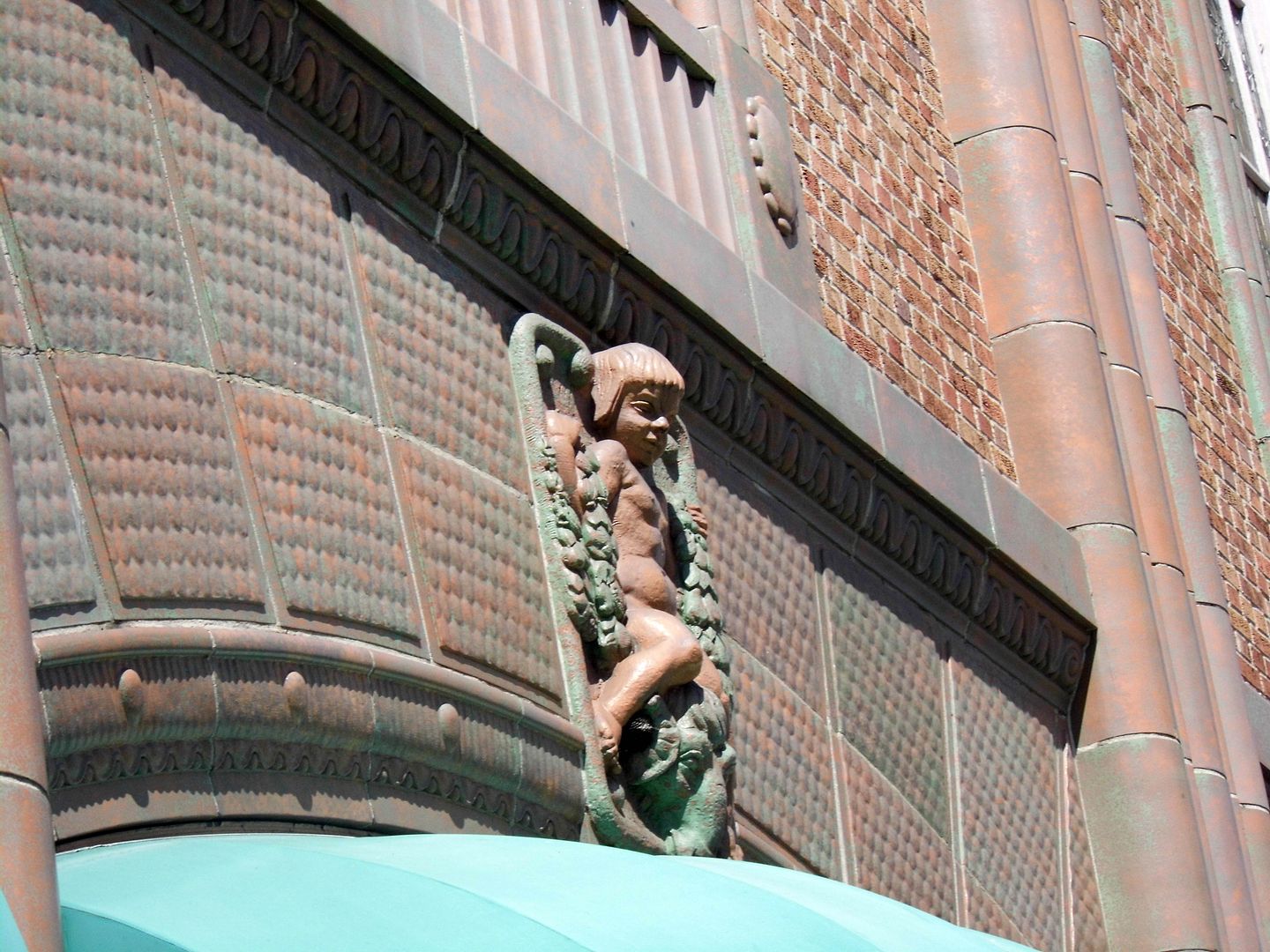
Built over the course of five years, completed in 1918, and dedicated in 1920, the three-story temple's features (including terracotta from Gladding McBean) is largely intact and mostly unmodified...
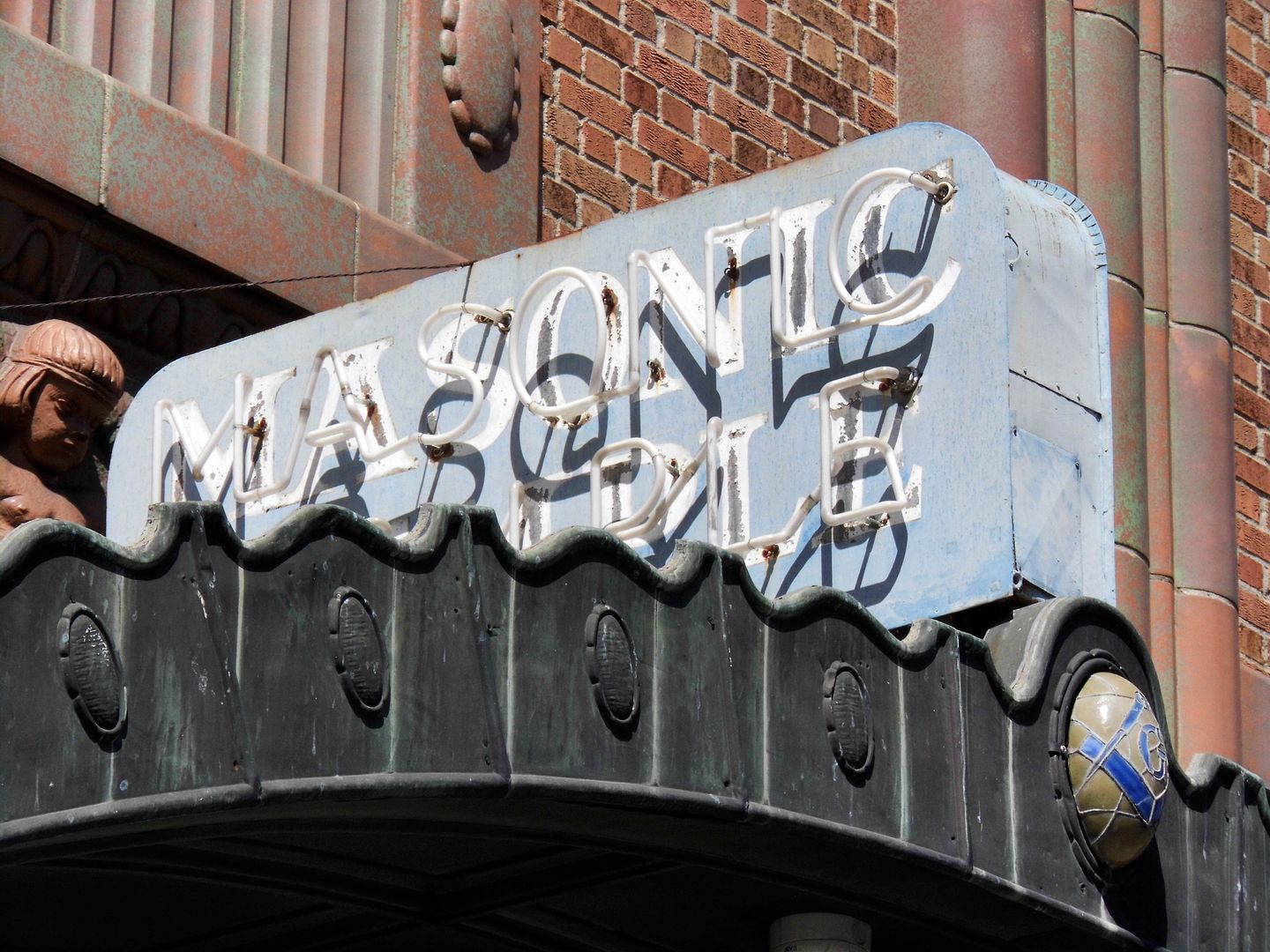
....save for the addition of a neon sign.
It's hard to take in a new city when you haven't got any real reason for being there. Whenever I visit a city for the first time, it's really just a scouting mission—because I can only take in glimpses of what it has to offer.
And then I use those to plan for my next visit. And the one after that. And so on.
So, next time I'll take a guided tour of the cathedral and a river tour by boat to hear more about the flooding, catch a good look at the I Street Bridge, and learn about the long-gone floating prison barge.
Stay tuned for detailed photo essays of the Sacramento Capitol Building and Tower Bridge.
Related Posts:
Photo Essay: Glimpses of Arizona
Photo Essay: Glimpses of Yuma Territory
Photo Essay: Glimpses of Baltimore
Glimpses of Havana in the Final Days of Fidel

No comments:
Post a Comment